VALENTINO CASSANELLI

JEREMY CHAN
IRÉ HASSAN-ODUKALE
ALEXANDRE MAZZIA
SANTIAGO LASTRA
HÉLÈNE DARROZE
TOMAS LIDAKEVICIUS
CHARLIE FOSTER
LARISA VESTERBACKA
CICCIO SULTANO
FATIH TUTAK


VALENTINO CASSANELLI

JEREMY CHAN
IRÉ HASSAN-ODUKALE
ALEXANDRE MAZZIA
SANTIAGO LASTRA
HÉLÈNE DARROZE
TOMAS LIDAKEVICIUS
CHARLIE FOSTER
LARISA VESTERBACKA
CICCIO SULTANO
FATIH TUTAK







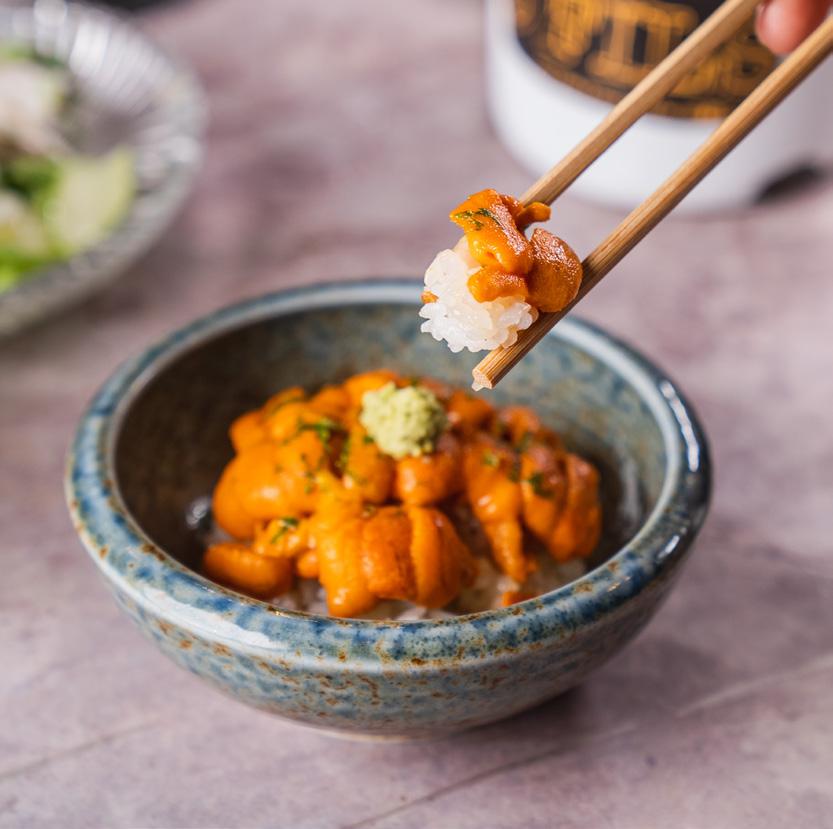
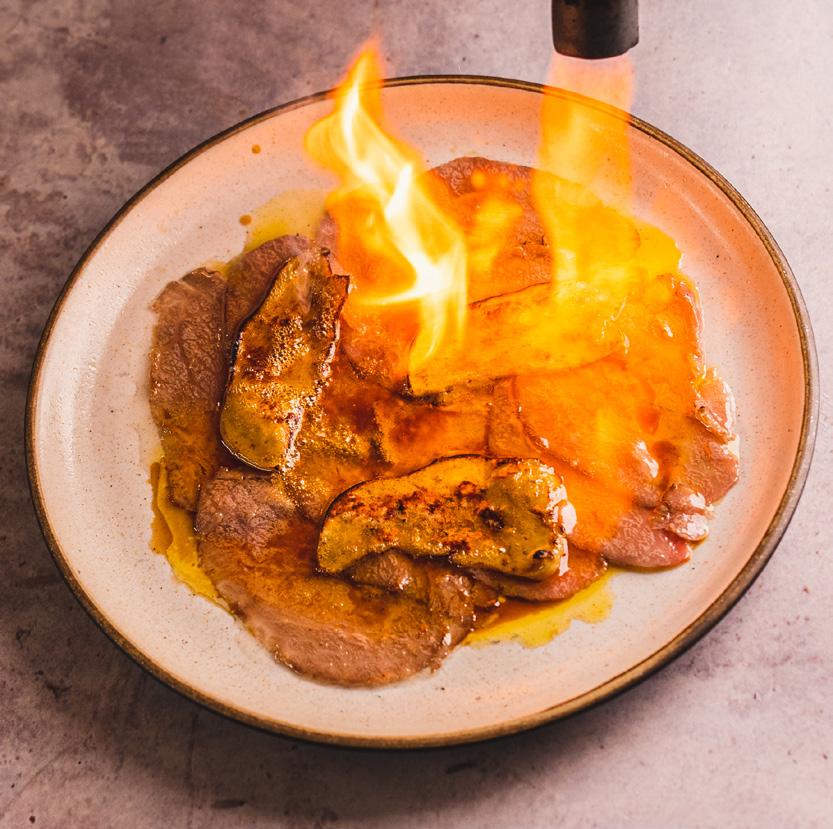
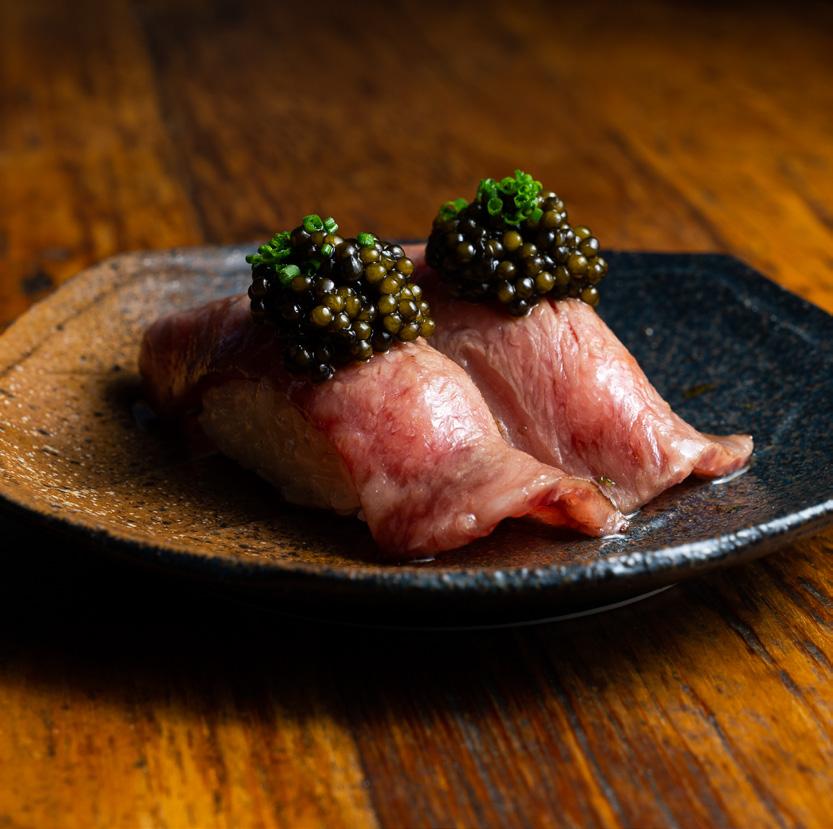








Editor Feature Editor Fabian deCastro Maria Lourdes
FJMdesign
WGkonnect
Photography Consultant
Creative Design Studio
Publisher
IZZY Publishing Pvt. Ltd.
WG™ is an online digital publication published by: Izzy Publishing Pvt. Ltd. Unit 14, Agnelo Colony, Kerant, Caranzalem, 403002 Goa, India wgmagazine@wgmagazines.com
Company Registration Number U22100GA2011PTC006731
Marketing & Advertising
E-mail: wgmagazine@wgmagazines.com
Content Creation
IZZY MEDIA FZ-LLC
WG™ Beverly Hills
287 S.Robertson Blvd
Beverly Hills, CA 90211
©IZZY Publishing Pvt. Ltd. All rights reserved. Editorial material and opinions expressed in WG™ digital publication do not necessarily reflect the views of IZZY Publishing Pvt. Ltd. WG™ and IZZY Publishing Pvt. Ltd. cannot be held responsible for any inaccuracies or errors and do not accept responsibility for the advertising content.
All contents are strictly copyright and all rights are reserved. Production in whole or part is prohibited without prior permission from IZZY Publishing Pvt. Ltd.
©2021 WG™ All rights reserved.
Identifying underprivileged children with culinary ambitions...Cover Image Credit: BREAD - VALENTINO CASSANELLI Photo ©GABRIELE STABILE
This 2023 summer issue is full of flavours from a small street food inspired kitchen in Goa to Michelin-starred restaurants in Istanbul with Fatih Tutak, in London with Hélène Darroze, Andrew Wong, Jeremy Chan and Iré HassanOdukale, and Santiago Lastra. To Italy with Ciccio Sultano in Sicily, Valentino Cassanelli in Forte dei Marmi, Lucca and Riccardo Canella in Venice, Italy. And with Alexandre Mazzia in Marseille, France.
Once a trained scientist and chemistry teacher, Larisa Vesterbacka’s passion for Asian cuisine and love for spices, bold flavours, textures, skills, and techniques takes her to Tam Nam, the flagship restaurant at Belmond’s La Résidence Phou Vao in Luang Prabang, Laos. While, Florence-born chef Simone Caponnetto’s food is rooted deeply in the flavours and produce of Tuscany at Locale Firenze. Flavour is the essence and identity of Alessandro Cozzolino, his wish is to make the simplest things memorable at La Loggia in Fiesole, Italy. At the Borough Market in London, Lithuania born chef Tomas Lidakevicius and fifth-generation greengrocer Charlie Foster’s typical menu is 80% vegetables and 20% protein.
After twenty years, Hélène Darroze returns to Paris with Marsan, a restaurant that says everything about her. With her partnership with the grand luxury hotel, Villa La Coste, in Provence, France, Hélène orchestrates the entire food and beverage operations, offering a cuisine in her image, imbued with emotion, sincerity and authenticity. At Jòia in Paris, Hélène has created flavourpacked dishes that combine the traditional recipes from her childhood home in Southwest France, with inspiration drawn from the tastes and flavours of her global travels and at Jòia Bun, her vision of a burger cuisine following the same principles of her gastronomy to produce a combination of her signature flavours - brought from the Basque-Landes, her home region. Bon Appétit.
From Curitiba in Brazil to Sydney, Australia, the AwardWinning Cookbook - COFFEE ABSOLUTE GASTRONOMY is a celebration of coffee. As an ingredient, coffee was highlighted in each recipe, with some plates specially created with Lavazza coffee beans, while others feature either ground coffee, an espresso shot, coffee infused in oil or a coffee rub to complement and highlight the ingredients in each dish, inspired by the genius of 40 of the world’s cutting-edge culinary professionals, each brought out the best of their culinary prowess while working with coffee as an ingredient – A culinary homage to coffee. Winner of the Independent Publishers Awards in the US and the No. 1 book in the world for Coffee by Gourmand World Cookbook Awards.

Heinz Beck, one of the most notable Masters of gastronomy in the world signs Coffee Absolute Gastronomy along with award-winning author Flavel Monteiro in Dubai at Gulfood.

Chef Heinz Beck’s unique interpretation of the modern kitchen goes beyond his undisputed culinary talent, the utmost attention toward the selection of ingredients and their transformation into highly innovative flavours. Beyond a career as a highly decorated Chef, Heinz Beck has been heralded as a leader in Italian and Mediterranean culinary tradition. Among numerous awards, Chef Beck has been recognised by Michelin, Bibenda, Gambero Rosso and L’Espresso to name a few.
The first photographer of the Rolling Stone Magazine Baron Wolman starts Coffee Absolute Gastronomy
“I did it for you my friend”.
Baron Wolman saw the music, his iconic music photography included shots with Jimi Hendrix, Rolling Stones, Jim Morrison, Janis Joplin, Grace Slick, Grateful Dead. to name a few.

Award-winning author Flavel Monteiro teams up Emmy award-winning director, writer and producer Keesa Ocampo and two of the finest Filipino chefs John Buenaventura and Nouel Omamalin to bring you a one-of-a-kind cookbook. Cuisinero - Taste The Philippines brings Filipino cuisine to life. Two of the finest chefs Nouel Omamalin and John Buenaventura, along with my coauthor Emmy award-winning producer Keesa Ocampo, bring distinct tastes, flavours and a new meaning to Filipino cuisine from the beautiful Philippine archipelago.
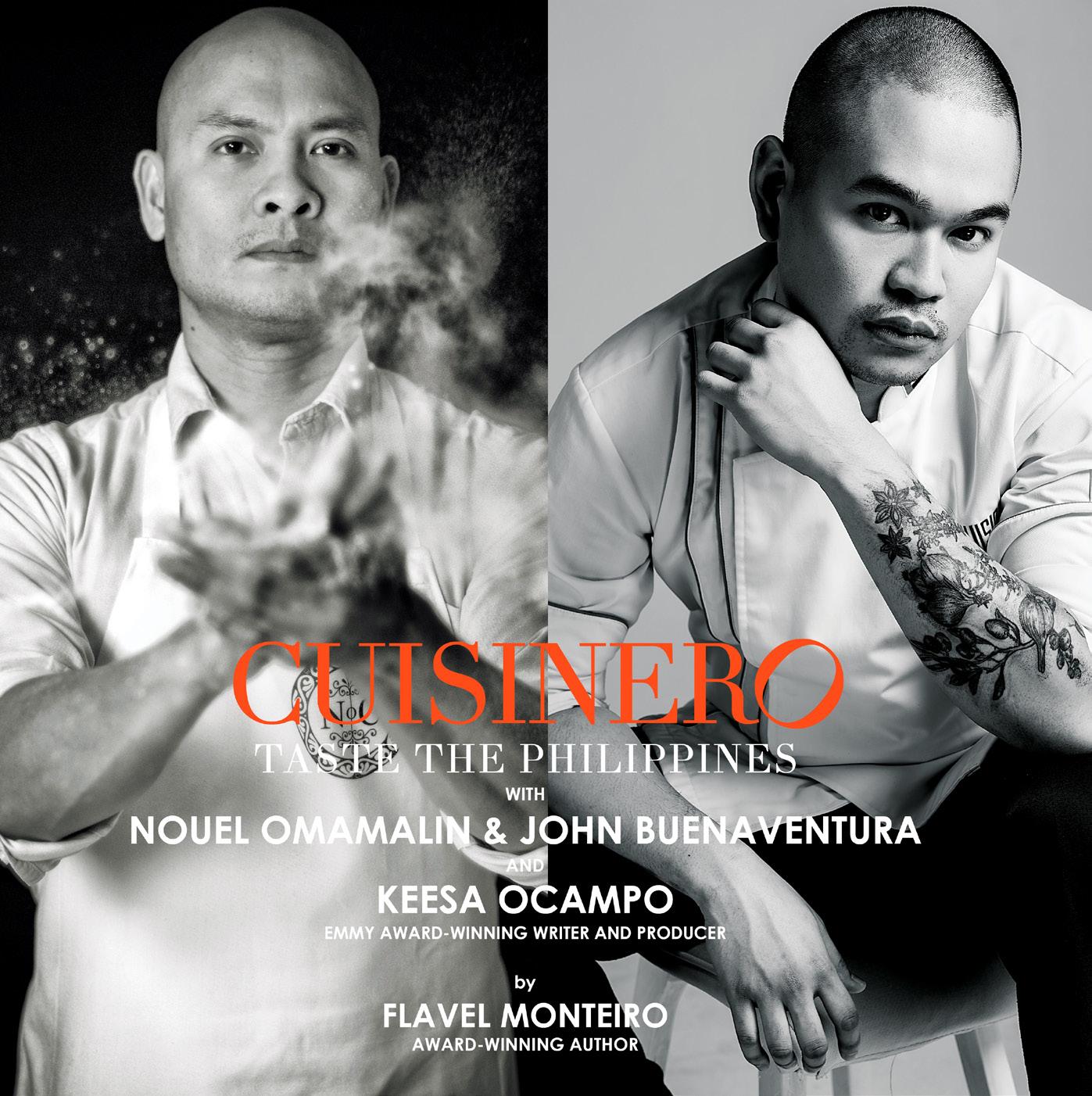
By definition, dessert is the end to a meal — not necessarily as Cuisinero - Taste The Philippines finishes on a savoury note! Flavel donated the eBook to the Philippine International Aid programs to help support the educational scholarships for disadvantaged children in southern Philippines.
Everything Flavel Monteiro does is to challenge the status quo and belief in thinking differently. Making an eBook to celebrate World Food Day with a collective of 50 of the finest Indian chefs from North America to New Zealand with their unique take on this beautiful age old one-pot-dish Khichdi. Indian cuisine is all about simplicity and Khichdi is India’s comfort food, the ultimate celebration. Coming from the Sanskrit word Khiccha –this iconic one-pot-dish of lentils and rice can be found in kitchens all over India. Flavel dedicate this book in the memory of his late sister Hanan Jozaih Shafair. The Great Indian Khichdi will fill your palate with taste sensations from India, from savoury richness to a burst of sweetness; enhanced flavours and aromas provide a sensation of richness and taste. Flavours change from state to state and include variations like Bajra and Moong Khichdi.
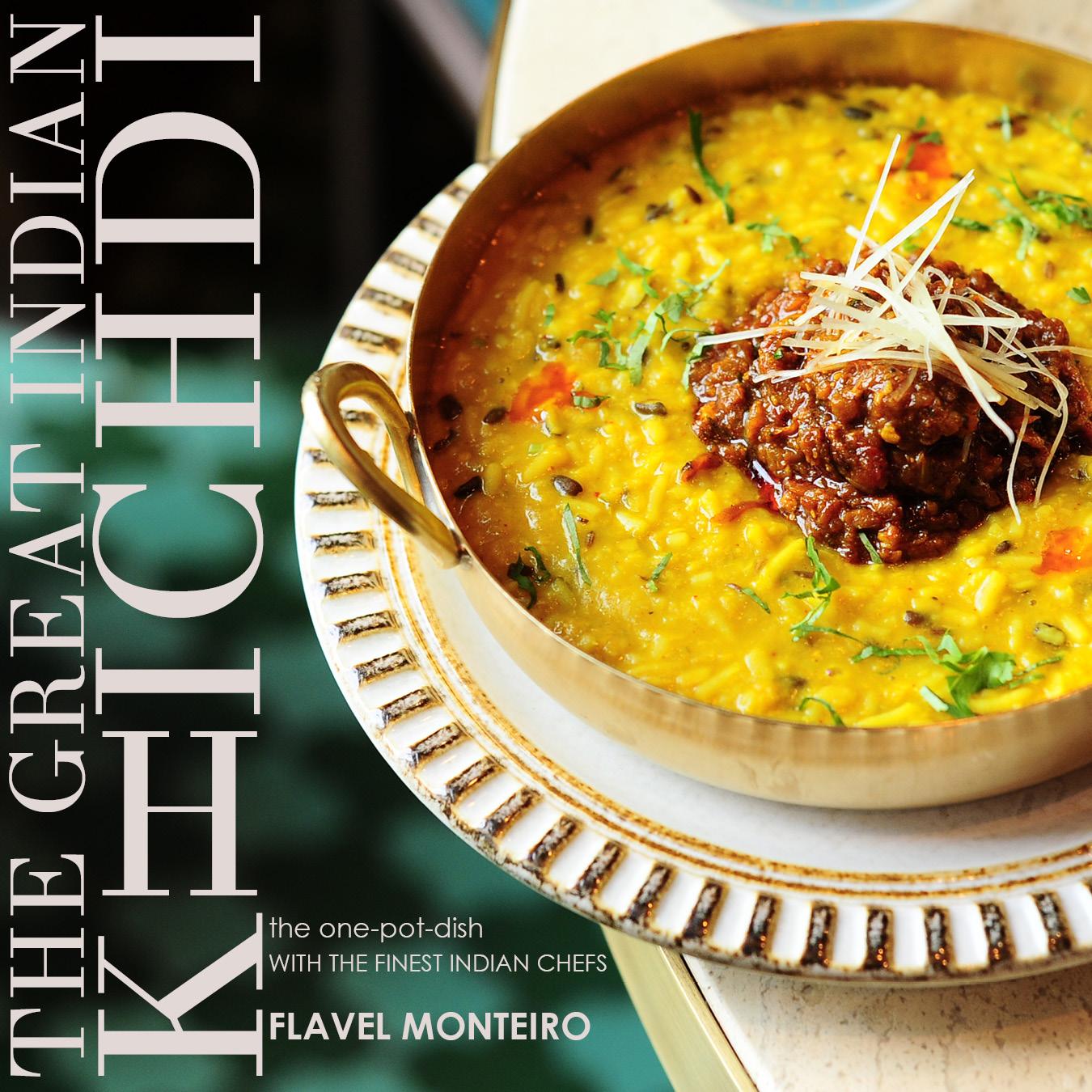
Born in Mont de Marsan in Les Landes, South West of France, Hélène is the fourth generation from a family of chefs. Unsurprisingly, she grew up instilled with a deep respect for her own regional culture and ingredients and immersed herself in the discipline and values of fine dining. However, it was the operational side of the restaurant industry that first appealed to the young Hélène, and she left school to complete a business degree at L’Ecole Supérieure de Commerce in Bordeaux. After graduation, she relocated to Monaco to work behind the scenes with Alain Ducasse at his three Michelin-starred Le Louis XV in the famous Hotel De Paris. However, it wasn’t long before Ducasse realised her innate potential and enticed her – initially part-time – into the kitchen.
In 1995, she returned to her home region of Les Landes, when her father gave her the keys to the kitchen of the family-run, Relais & Châteaux affiliated restaurant in Villeneuve-de-Marsan. This allowed Hélène to refine her culinary style with family support and where she remained for four years. By the time she turned 32, however, she was eager to build a career of her own and broke with family tradition, returning to Paris to open her own venture, Restaurant Hélène Darroze, in the heart of Saint-Germain des Prés on the Left Bank. The restaurant received international acclaim and was awarded its first Michelin star in 2001, followed by a second star in 2021.

 KRISTAL CAVIAR, SEA URCHIN, CHAWANMUSHI, CAULIFLOWER, SOBACHA ©JUSTIN DE SOUZA
KRISTAL CAVIAR, SEA URCHIN, CHAWANMUSHI, CAULIFLOWER, SOBACHA ©JUSTIN DE SOUZA
Building on the success of Paris, she opened her first restaurant outside France at the historic hotel, The Connaught in London’s prestigious Mayfair, in 2010. Just six months later, Hélène Darroze at The Connaught was launched and awarded a Michelin star, with the second following in 2011. The restaurant underwent a complete refurbishment and modernisation, reopening in September 2019. It was then awarded the ultimate three stars in the 2021 Michelin Guide. Her earliest inspiration to use the very best in seasonal ingredients remains integral to her kitchen, and she is meticulous in sourcing the finest produce from her native Les Landes, the French Pays Basque and within the British Isles. The very origins of her creativity stem from a respect for those ingredients and her long-term relationship with loyal suppliers. Dividing her time between Paris and London, Hélène now directs her teams and menus on either side of the English Channel. For her, gastronomy remains the most significant opportunity to deliver the ultimate in hospitality. In her own words, “to cook is to live and to live is to cook.” Hélène’s cuisine is an opportunity to share her greatest pleasure with others: creating dishes that are dear to her and her guests. Her creative flair brings self-expression that uses emotion as a starting point and is bound by the common thread of authenticity, resulting in dishes and menus full of instinct and emotion, yet always remaining faithful and sensitive to the absolute quality of their core ingredients. In addition to recognition by Michelin, she has been awarded the Veuve Clicquot Prize for Best Female Chef 2015 from The World’s 50 Best Restaurants. As the mother of two girls, Hélène co-created the charity association “La Bonne Etoile“, which helps disadvantaged children and received the Knight of the Legion of Honor rank in 2012.

She has been a judge on the hit French television series “Top Chef” since 2015 and is an author of four books: “Personne ne me volera ce que j’ai dansé“ (October 2005; second edition November 2013); “Les Recettes de mes Grands-Mères” (November 2014); ‘Mes Recettes en Fête” (November 2015); and “Joia par Hélène Darroze” (October 2019). All books were published by Cherche-Midi. In September 2018, she opened a new venture titled Jòia by Hélène Darroze in Le Sentier (2nd Arrondissement) in Paris. Seven months later, and after an extensive 11-month renovation, she re-launched her flagship restaurant on the Rue D’Assas in the 6th Arrondissement. Named after the capital town in her home region of Les Landes,
Marsan by Hélène Darroze heralded a return to Hélène’s roots with an exciting new menu and stunningly redesigned interior.
In July 2021, she opened Hélène Darroze at Villa La Coste, in partnership with the grand luxury hotel, Villa La Coste, in Provence, France, where she oversees all food and beverage operations. Nestled at the heart of the Château La Coste Estate near Aix-en-Provence, the Villa La Coste is a modern-day luxury palace celebrating authentic and exclusive refinement, in total harmony with the artistic life of the surrounding estate. Seduced by the opulence and diversity of the vegetables and fruit from the region, Hélène works alongside her London-based restaurant manager, Mirko Benzo, and Head Sommelier at Villa La Coste, Bernabé Pérez, to create menus reflective of the region and rooted in local. In addition, Hélène was the inspiration for the character Colette in Pixar Animation Studios’ 2007 blockbuster film Ratatouille. The American toy manufacturing company Mattel also used her as the inspiration for the chef doll in a new concept of 14 different female role models in the Barbie range. The dolls were released in March 2018 to celebrate International Women’s Day and to honour “women who have broken boundaries in their fields and have been an inspiration to the next generation of girls”.
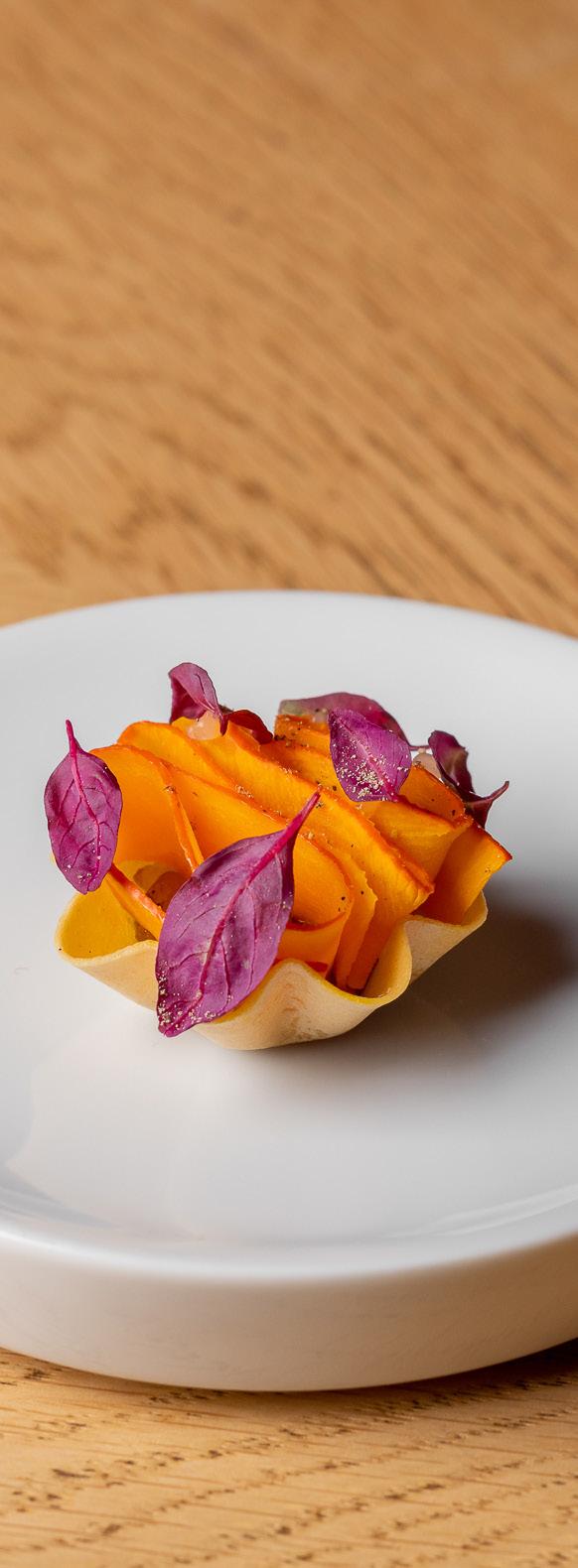
WAGYU BEEF TARTARE, JAPANESE AUBERGINE, BEEF CONSOMMÉ JELLY , SMOKED EGG YOLK ©JUSTIN DE SOUZA

 THE RADISHES FROM ALLYWOOD FARM ©JUSTIN DE SOUZA
THE RADISHES FROM ALLYWOOD FARM ©JUSTIN DE SOUZA
Three Michelin starred Hélène Darroze at The Connaught reopened its doors after a full and extensive, twomonth refurbishment and modernisation in 2019. The acclaimed chef’s creative vision has been realised in a bold reimagining of the dining room, kitchen and menu, with a stunning new Chef’s Table, show kitchen and dedicated Armagnac Room.
The Menu – Passionately obsessive about the quality and origins of her ingredients, Hélène lives by the philosophy that the star of any dish is not created by the chef but by the finest ingredients that make up the plate. Each meal starts with a seasonal consommé to gently cleanse, open the palate and begin the dining experience. Guests can then choose dishes based on the provenance of each key ingredient, such as Crab – Davrik, Cornwall, or Lamb – North of Wales. Menus adapt more frequently to fully embrace the changes in British weather and micro-seasons. Hélène explains, “Every dish I have ever created is part of who I am – not just of my work and travels, but also of my family and teams, past and present and of the incredible artisanal suppliers I have come to know and respect. Now with just over ten remarkable years in London, I have the opportunity to focus even more on the outstanding quality from some of Britain’s greatest producers and suppliers. Over the years, they have become a growing part of the menus at The Connaught and perfectly complement my long-standing relationships with the finest producers from Southwest France. The refurbishment has afforded me a perfect platform to showcase them at their very best.”

Art à la Table – Presentation too has not escaped her meticulous attention to detail. From the independent ceramicist Ema Pradere, who has been commissioned to supply her hand-crafted, consommé bowls that open each menu, to the iconic Hermès, who provided their Bleu D’Ailleurs tea and coffee service to finish. Hélène was personally responsible for choosing the skilled artisans, ensuring a bespoke sensory experience for each guest.
The Dining Room – Keeping with the historical integrity of the hotel, Paris-based interior architect Pierre Yovanovitch has taken cues from the menu and table presentation and placed craftsmanship front and centre. Reinventing the main dining room using deep hues and rich textiles, he has lightened the historical, dark oak panelled walls and created a modern lightfilled, refined and cosseted space. Customised flooring adds depth and warmth, while bespoke curved banquettes and chairs exude a flow of tactile colour in shades of soft pinks, tans and greens, upholstered in a mix of velvet and leather. A bespoke chandelier made of hand-blown glass with blue lacquered, wrought-iron adds a contemporary contrast, alongside the individual oak tables with dramatic, red, ceramic lacquered, metal bases. In addition, the two unique paintings by artist Damien Hirst, commissioned by The Connaught, have been reinstalled and sit on opposite sides of the restaurant as guests enter.
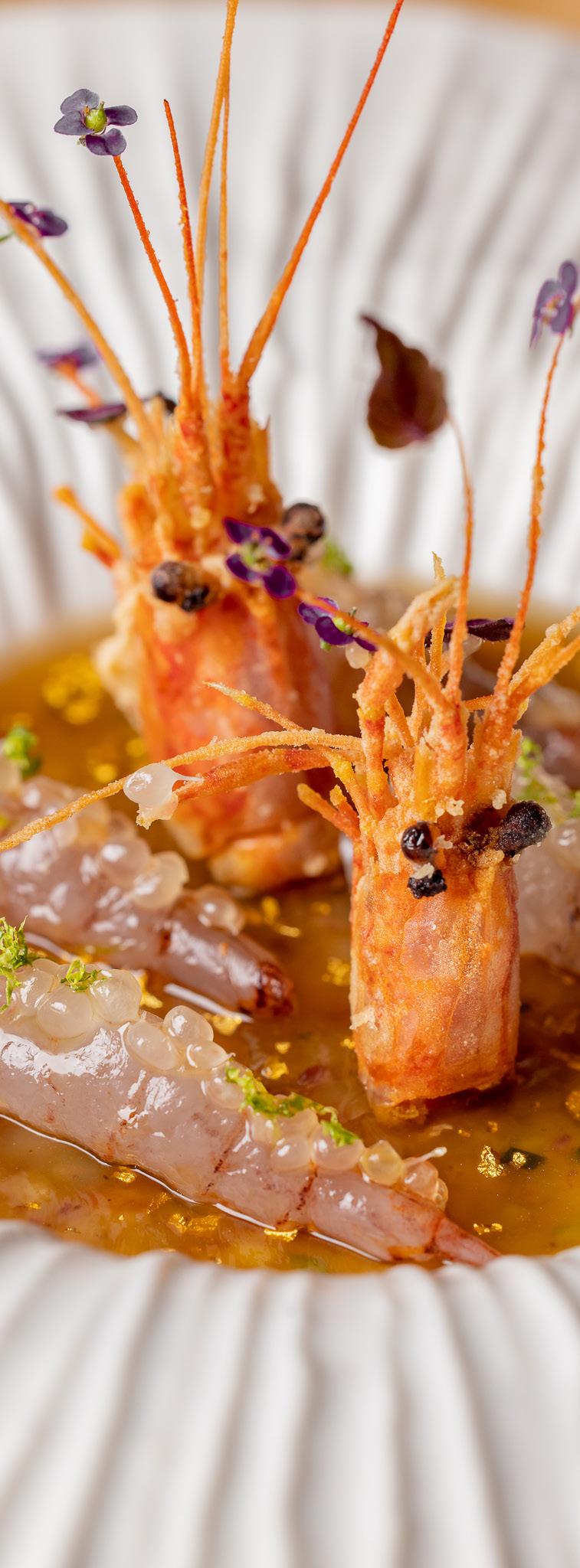
WAGYU BEEF TARTARE, JAPANESE AUBERGINE, BEEF CONSOMMÉ JELLY , SMOKED EGG YOLK ©JUSTIN DE SOUZA


The redesigned show kitchen which now boasts a newly installed Chef’s Table. Set within a generous space, the open kitchen reveals pale oak panelled walls with bespoke Matteo Gonet lamps that spotlight the customised pink marble tabletop, set on a terrazzo dias and surrounded by plush armchairs. Seating up to ten, guests dine under a cobalt blue fresco commissioned by the artist Rochegaussen. Menus differ from the main dining room based on a sharing concept and offer guests informal interaction with the chefs as they personally present the dishes.
The wine list at The Connaught includes some of the finest wines in the world, with a collection of over 3,000 bins and a total of more than 20,000 bottles. This impressive selection was started by the previous Head Sommelier and now Restaurant Manager, Mirko Benzo, and is continued by the present Director of Wine Daniel Manetti. Wines have been chosen explicitly through tastings, monthly trips and visits to the essential wine regions in Europe and worldwide. Above all, the wines reflect the unique and special bond Hélène and her team have with the producers. Armagnac plays a significant role here, too – a distinctive style of French brandy and the oldest French eau-de-vie dating back to 1310. It is also a signature feature of the restaurant. Hélène’s family have been devoted to Armagnac for three generations, and the cellars are now managed by her brother Marc, a trained oenologist. Darroze Armagnacs are considered by spirit lovers as some of the finest available, and today their cellars hold over 250 different Armagnacs from thirty estates and fifty vintages.


Born to French parents but spending his childhood in the Republic of Congo, Alexandre grew up with a curious nature under myriad influences. He took inspiration from his surroundings and spent his time exploring the outdoors. A dedicated student, he earnt a Degree in Science; however, it was sport that captivated his attention and, standing at 1.92 metres, he became a professional basketball player. Upon returning to France, he attended a hospitality and gastronomy school, École Hoteliere Santos Dumont in St. Cloud; his grandmother’s aphorism of “cooks never starve” had affected him significantly. He then accepted numerous apprenticeships, working at Place de la Madeleine in Paris and several celebrated French kitchens before travelling to Spain, where he staged at the world-famous Santi Santamaria in Barcelona. While continuing his ascent in the kitchen, Alexandre combined experiences in the world’s best restaurants with a pro basketball career until an injury forced his retirement in 2004.
Alexandre’s first solo position was as a private chef at Le Hom’Art in Avignon, where he spent a year and a half cooking for dignitaries and VIP clientele. In 2009, he accepted a permanent role in Marseille at Le Corbusier, where his own style began to formalise and emerge. Life in Marseille suited Alexandre, and he began to cook more confidently, leaning on the surroundings and incorporating local produce with his African childhood and influences. With its geographical positioninglocated on the coast of the Gulf of Lion and part of the Mediterranean Sea - and its history as an important port city, Marseille challenged Alexandre, forcing him to explore further and search deeper. Opening AM Par Alexandre Mazzia in 2014; he continues exploring and taking inspiration from the sunshine city.

Alexandre continues to seek creativity from his experiences and surroundings, pushing himself into a place of imaginativeness and boundless creativity where he is able to test new ideas. Memories of his childhood in The Congo, his travels across Europe and the sights, sounds and smells of Marseille all feed into this creativity and result in a new type of cuisine. The influence of France remains strong, but Spain and Central Africa, too. His was a training of haute cuisine, altered through time and shaped by a life of transit and multifarious cultures in which guests journey on a replication of Alexandre’s many adventures in a new innovative menu, one without rules and boundaries.
Mastering raw ingredients and transforming them with such freedom continues to offer excitement and freedom to Alexandre. With the relationships formed with his producers and suppliers, he can experiment further and apply varying techniques and new, left-of-centre ideas to the finest ingredients. This combination allows him to cook with confidence and originality, not bound by past teachings or the perceived food of the region, but something entirely authentic.
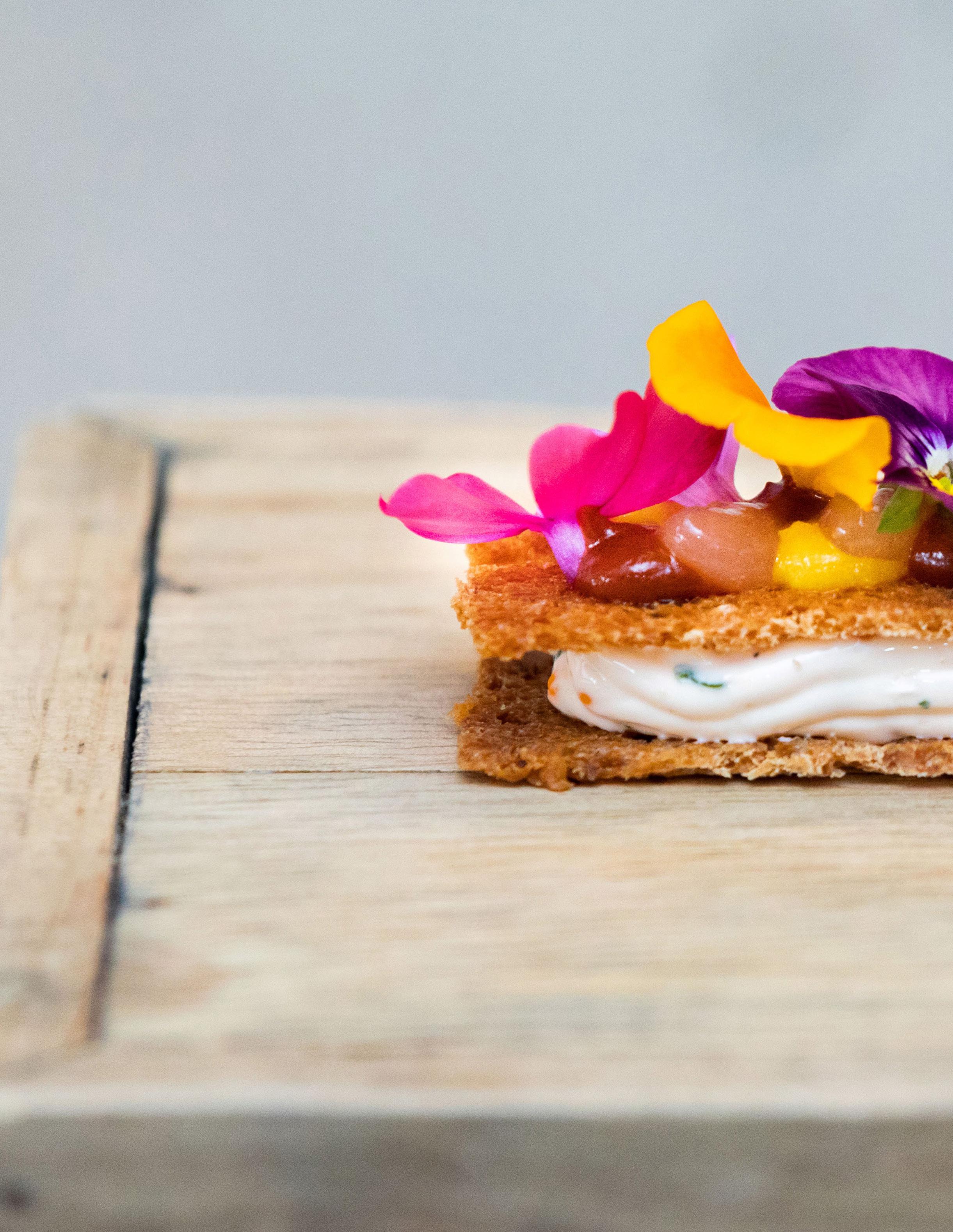
Guests can expect evolving Travel Menus, where ever-changing expressions of Alexandre’s thoughts and ruminations of the day transpire. Menus range from ten to twenty-five individual small dishes, uniting the kitchen and the diner and designed to each guest’s mood, appetite and energy on the day.
With worldwide influences, Alexandre’s repertoire dips and dives with pickings from across the globe. While his producers, suppliers and growers gravitate around Marseille, his inspirations and learnt techniques are infinite. His relationships with local suppliers significantly impact the menu and form the genesis of many recipes. Jean-Baptiste Anfosso lovingly grows permaculture vegetables, Sylvain Erhardt delivers his famous springtime asparagus and Xavier Alazard blends divine olive oils. Given the seafront location, Alexandre is regularly in contact with local fishermen, too, sampling the morning catch and working with Fabian Gardon, one of the youngest fishermen in Marseille. He sources spices from Saladin in Noailles, Romuald, a specialist of Indian spices and Arnaud, who travels around the world to discover spices.

“Alexandre Mazzia’s AM Par Alexandre Mazzia is a deeply personal expression of his story, thoughts and heart. The restaurant name itself is a play on the French word for soul, âme, as well as Alexandre’s initials. For him, to welcome guests into his home is to give them a glimpse into his soul”

A triangle of tastes - at the heart of Alexandre’s cooking is a triangle of flavours, pointing to spice, smoke and chilli. Each flavour weaves between courses and connects his childhood in Pointe-Noir (the second-largest city in the Congo) to his current home in Marseille, where heat lifts ocean flavours, and smoke infuses and slow-cooks fish - inspired by fishing trips with his father.
Spices - galangal, ginger and cumin balance in a signature blend of spices that Alexandre uses like salt to season and heighten each dish’s flavour, colour and depth. Other flavours, like the use of fennel, bring a light-aniseed profile to dishes.
Smoke - burnt and charred woods create smoky aromas that boldly punctuate Alexandre’s cuisine. Different varieties of wood, such as vine shoots, beech wood and olive tree, are used to present varying levels of woodiness, imparting all manner of delicate smoky flavours.

Chilli - another connecting thread is Alexandre’s knowledge of chilli. Under his control, chilli builds bridges between flavours, creating an energetic tension that allows a dish to reveal a heightened taste. With over 45 kinds of chillies, some remain vibrant and fresh while others are submerged in oil or brine, dried or powdered. The results allow for the liberal application of varying chilli flavours and heats.
The menu is a freestyle evolution, always bold, always contemporary, and always technically precise. Take, for instance, a recipe like chocolate-smoked eel tartlet, as explosive as it is beguiling, and a langoustine coated in manioc with egg yolk confit and mirin rice wine, which lifts the natural sweetness of the langoustine and lends mild acidity from the use of mirin. The menu playfully examines colours and flavours, stretching ingredients’ capabilities and showing guests what’s possible with creative expression. From vitaminised oranges to coral blues, dishes visually set the tone for guests’ expectations while always respecting the locale and the seasons.



 CUILLÈRE DE SORBET FRAMBOISE-HARISSA ©PHILIPPE VAURES SANTAMARIA
OYSTER WITH NORI BUTTER ©DAVIDGIRARD
PALET GIVRÉ, CIDRE, PASSION, CURRY VERT ©PHILIPPE VAURES SANTAMARIA
OYSTER WITH CANDIED CITRON ©DAVIDGIRARD2022
CUILLÈRE DE SORBET FRAMBOISE-HARISSA ©PHILIPPE VAURES SANTAMARIA
OYSTER WITH NORI BUTTER ©DAVIDGIRARD
PALET GIVRÉ, CIDRE, PASSION, CURRY VERT ©PHILIPPE VAURES SANTAMARIA
OYSTER WITH CANDIED CITRON ©DAVIDGIRARD2022
Born in Istanbul, Fatih Tutak has spent the best part of his career to date outside Turkey, working in some of the most globally renowned restaurants. He attributes his career choice to the feeling of pleasure and joy that his mother’s delicious cooking brought to the family table. This in turn led him straight to culinary college in Mengen - a town in Bolu Province on the main road between Istanbul and the capital, Ankara - and famous throughout Turkey for training the finest chefs in the country.
After working his apprenticeship in some of the country’s best hotels and restaurants, including the Ritz-Carlton Cam in Istanbul under famed chef, Paul Pairet, his focus turned east. Until that point, for all he had learned and honed as a young chef, Fatih began to view gastronomy through a global lens.
Knowing very little about the great cuisines of Southeast Asia, China and Japan, he made the decision to leave his native Turkey and pursue new horizons. He hoped that by immersing himself in other cultures outside his professional comfort zone, he could refine his own definition and understanding of gastronomy, while further developing his skill set.

 DRY-AGED PERSIMMON, KAYMAK SNOW
DRY-AGED PERSIMMON, KAYMAK SNOW
A culinary odyssey followed through the kitchens of China’s great port cities of Qingdao and Beijing, then onto Singapore. During this time, his drive and evident talent earned him a four month stagiaire in Tokyo under Seiji Yamamoto at three Michelin-starred Nihonryori Ryugin, before he was presented with a unique opportunity to join René Redzepi at the much celebrated Noma in Copenhagen. He then admits to feeling the pull of the East again, and returned to Hong Kong, furthering his techniques and immersing himself in a history and culture that truly fascinated him.

A move to Thailand in 2015 saw him open The Dining Room of The House on Sathorn in Bangkok as Head Chef. In just two years he rose to Director of Culinary Operations and led his talented team to international accreditation, both in Asia’s 50 Best Restaurants (No.36 in 2017) and a Michelin Plate in the Thailand Guide 2018-19.
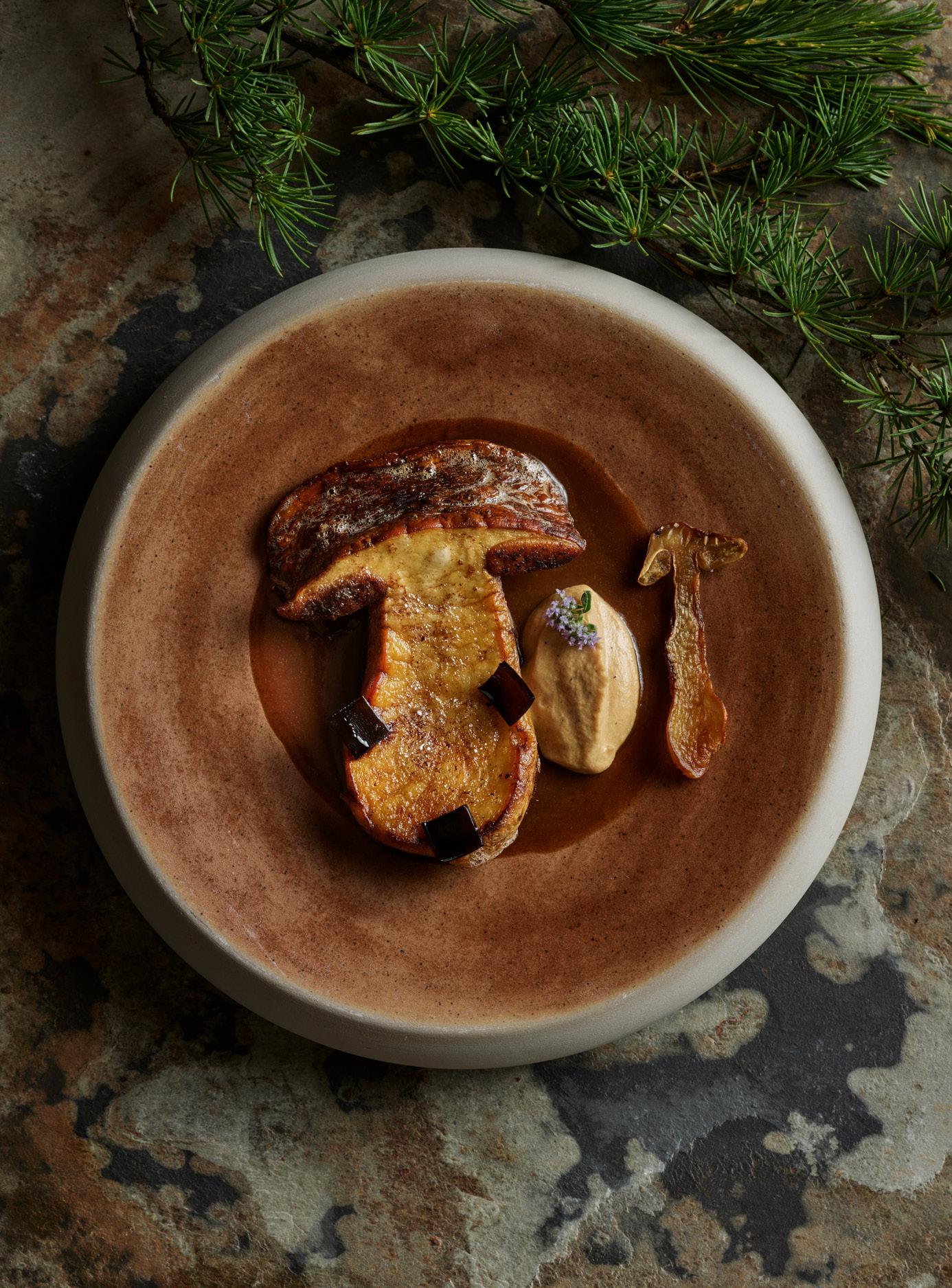
It was here that circumstance would play a pivotal role in his career. During the development of a private dinner for an expat Turkish guest, Fatih created a dish he called ‘From my Mom’, which was his take on the Turkish dumpling, manti. The guest’s emotional response to that dish, made Fatih realise just how important it had now become for him to further explore the food from his home country and look at it with a fresh perspective. He developed an entire menu of ‘New Turkish Cuisine’ and introduced it to The Dining Room.
In contemplating this new perspective, it became clear to Fatih that to really understand Turkish food, both for him and as a concept, he had to become close to it again and surround himself with the produce from its land. He returned home in February 2019. “I needed to smell, touch and feel the real Turkey; to be part of the people again - the only way to feed my mind and heart was to go back”.
Turkey is a land uniquely placed. Sitting astride two great continents, Europe and Asia, it boasts an ancient history from antiquity and the spice routes, to a multiplicity of culture from its different communities. This coupled with the diversity of its land and native produce, meant Fatih was able to pull on many inspirations. With the depth of experience he had now gained, he was able to thread together the strands that make up Turkish food culture and envision a new culinary landscape.
He started looking to source traditional ingredients that have fallen out of favour, even with locals, for example, he has dry-aged meat from a native duck that took him back to Ottoman history for inspiration. He also began to reimagine entire dishes, such as beef kavurma, using an open fire and oven to create a depth of flavour through longer cooking times, rather than traditional frying. He added playful touches to classic flavour combinations, such as lamb, freekeh and yoghurt.
Working closely with farmers, fishermen and spice dealers, Fatih started to weave a story through the food. “A dish must touch the heart,” he explains, “so I had to respect that and leave alone those everyone had eaten since childhood. That meant starting from scratch - to focus on the ingredients themselves using the techniques we have now while referencing the old ones and creating something unique.”



In December 2019, Fatih opened Turk Fatih Tutak, The opening of the restaurant is not only a return to his home city but also an exploration into the history and understanding of his own cultural heritage, memories and the nostalgic journey into why he became a chef in the first place.
Fatih’s cooking is not to reproduce what has been done before, but to research, explore and be inventive. He expresses the same limitless passion within the boundaries of respect, creating refined reinterpretations of traditional flavours and building a new language in Turkish cuisine.
It is a restaurant that embodies the journey of its talented chef and subsequently one of Turkey itself. Through his in-depth research of historical and traditional cooking techniques, Fatih showcases a clear understanding of Turkey’s finest produce, creating dishes with playful imagination and harnessing each ingredient to the best of its capacities.
Fatih aims to modernise what Turkish cuisine is and can be, pushing the boundaries and preconceived notions of his country’s culinary output. For instance, Tarhanas are applied as a seasoning and sauce rather than a soup, as is traditional, and experiments with garums and fermentations stretch and manipulate the capabilities of an ingredient.

Working closely with Turkish farmers, fishermen and artisan producers, Fatih supported these local artisans during the Covid lockdown by continuing to purchase products. His thinking was that while the restaurant may have been closed, the seasons continued their cycle, and Turkey’s bounty of produce showed no sign of stopping. He used this time to explore new ingredients and experiment, ensuring that no season went untapped. He preserved last year’s harvest in the form of garums, misos, Tarhanas, pickles and many other fermented ingredients to pair with their fresh counterparts this year. Through these practices, he elevated humble ingredients into something extraordinary.
Applying the techniques and skills acquired on his travels, Fatih creates refined reinterpretations and recalibrations of traditional flavours. He “Cooks with Time”, understanding the importance of both time as a cooking construct - knowing when is best to serve an ingredient at its optimal taste - and time as an indefinite continuation of life and his thirst for creativity. Celebrated for his creative approach to ingredients, his dishes are micro-seasonal with a strong emphasis on sustainability.
The Tasting Menu generally consists of 10 servings, journeying the guest across the many regions of the country. The menu is accompanied by either a wine or juice pairing, with all wines grown and harvested in Turkey. The TURK experience is as much a deep dive into the country’s cultural past as it is an exploration into its culinary future. Bringing together East and West, TURK explores the history and the possibilities of the future, reflecting Turkey’s exciting duality and gastronomy.

THRACIAN WHITECHEESE AND AYVALIK EARLY HARVEST OLIVEOIL ©EDA ILDAM


The primary aspect that makes this dish significant is captured in the method used to create it, which involves a lengthy process of researching and perfecting the recipe. The dish was a work in progress since the chef’s time in Bangkok, and, during the pandemic, the team further developed and finalised the recipe. It represents the country’s cuisine, as it incorporates eggplants, a quintessential ingredient in Turkish kitchens, in different ways. First, there’s the smoking and grilling of the eggplants and then the making of tarhana out of them. Fatih eventually discovered that they could create soy sauce from this tarhana. The actual preparation of the dish takes three days, while the tarhana requires about a week. It took a considerable amount of time to bring all the components together and find the right balance for the final result. Therefore, the most crucial element of this dish is the extensive research and development process.

The Mussels Dolma is a dish that perfectly blends Turkish traditions with an innovative gastronomic approach, making it one of the best expressions of TURK’s menu. Chef Tutak believes in creating new recipes that respect and draw inspiration from tradition, and this dish reflects that philosophy. To give it an interesting twist, they serve it with beer mayonnaise, which repropose the typical street food combination of beer and mussels in a fresh and unique way. They wrap the rice in vine leaves and place it between two edible mussel shells. The shells are made by cutting a sheet obtained from mussel pulp, and, for the shaping, they are placed between real mussel shells while dehydrating them.



The umami birthday cake dish features layers of matsutake mushroom slices, Pelit cheese slices, and caramelised onions. The sauce on the plate is made from a reduction of white wine, onion, and mushroom juices. The cake is topped with homemade sour cream and a candle obtained from bone marrow and beef fat. Turned on with a blowtorch, the candle melts and incorporates so with the sauce.
Matsutake mushrooms are typically found in the Taurus Mountains in the southern region of Turkey, where they grow under pine trees. Despite being exported to the Far East in large quantities, they are seldom used locally due to their rarity. Similarly, Pelit cheese, made from goat milk and aged for ten months in caves in Fethiye, is also a precious ingredient.
The reason behind serving this dish is to evoke the joyous vibes and excitement of birthday celebrations, one of the happiest days in a person’s life. Each guest is presented with a slice.





Tucked away in Caranzalem, Taleigao, Goa, is Taste, a gastronomic fusion of the Japanese Korean, Filipinoinspired street food kitchen with a twist by consultant chef Maria Aquino and Fabian deCastro Monteiro. Maria brings a wealth of experience to Taste and honed her culinary skills and techniques from The Association for the Advancement of Japanese Culinary Art. Maria creates a fusion of Asian cuisine with the ultimate comfort foods – donburi rice bowls, yasai itame (stir-fry) udon noodles, and Kushiyaki wraps.
The menu at Taste is all about sweet savoury or a spicy fermented savoury deliciousness of umami. It is not just a mix of vegetables; it’s a combination of sauces and the dashi broth that imparts a unique depth of aromatic spice flavours and creaminess to the dishes such as the Negi Miso Chicken, Korean Spice Chicken, Basil Garlic Tamarind Chicken, Ganjang, Green Chili Soy, Adobo, Sweet Spicy Gochujang Chicken, Jjapaguri, Chinjao Rosu, Miso Beef, Pan-Fried Pork or Pork Stir-Fry either served with Jasmine Rice or Udon Noodles.

Born in Nigeria’s bustling coastal city Lagos, in the neighbourhood of Ikoyi, Iré’s formative years were spent surrounded by close family and a rich mix of the food cultures of West Africa. It was here too he was exposed, however subliminally, to his family’s main business: the corporate world of insurance and laterally, hotels and hospitality.
At 16 he came to England for Sixth Form, before graduating in Economics and Politics. This was the place Iré first became homesick for the bold flavours that had played such an important and nostalgic part of his childhood. It was also a place where he first met Jeremy Chan, a childhood friend who would later become a business partner.
Unsurprisingly after graduation, he followed his family’s footsteps and began working in Insurance, where he remained for six years before becoming an Underwriter. But the lure of food was never too distant and with no formal training, he began working with some friends who were launching their own restaurant concept in East London. With a new opening in one of the most competitive markets in the country, he experienced all sides of the business, from planning, to licensing, construction, health and safety through to menu development and employment laws.
He was hooked and the experience prompted him to think about his own future and the initial ideas for a restaurant began to form.
A serendipitous conversation with old friend and then flat mate, Jeremy Chan, led to a loose set of ideas, that ultimately, they honed into the concept that was soon to become Ikoyi.
What began with an odyssey by the two childhood friends into a rich world of produce, taste and flavour, has resulted in the creation of an elegant, balanced cuisine, totally unique to itself and arguably one of the most innovative in the capital.

Born in the North West of England, Jeremy’s journey into professional kitchens was far from traditional. An intuitive academic, his early years through to adulthood were spent soaking up the ever-changing world around him. Sciences, languages, arts - nothing within or out with school escaped his restless enthusiasm. However, his one constant in all this was food, and he early recognised its link to his studies, the senses, and the part culture played too.
This analytical mind set led him to university, and after graduating in Languages and Philosophy, he found himself back in Europe working in finance. Realising this was ill-suited to his many interests, he instead found himself drifting back to his one constant, avidly reading, analysing and researching everything he could about chefs and gastronomy. The more he read, the more immersed and impassioned he became, and he knew in what direction his career would take.
A chance conversation with childhood friend and now-business partner, Iré Hassan-Odukale ignited a spark around the possibilities of new restaurant concept. A period of intensive research ensued and what emerged was a series of new dishes with unique international flavour profiles and a desire to forge a new culinary narrative. For almost five years, he worked tirelessly, absorbing every last bit of information, taking notes, researching in his free time and immersing himself in the physical and mental repetition of acquiring skill and technique to master the craft of cheffing.
Fascinated, Chan immersed himself in the culture and tastes of a new world of flavour but approached the ingredients with a considered open mind and little initial aesthetic agenda. Using Iré for feedback, he began combining his culinary skills and ideas with British ingredients. As this process developed, so did his innate creativity, and he became less bound by geography. A series of new dishes with unique international flavour profiles emerged, driven solely by his search for ‘deliciousness’, and the concept of Ikoyi was born.
Working directly with select British farmers, fishermen and producers, the kitchen is driven by a totally objective, creative reaction to micro-seasonality and often overlooked ingredients in terms of context and culture. A pure, personal expression through Jeremy’s analytical lens, dishes harness flavour highs while respecting the nature of each ingredient.
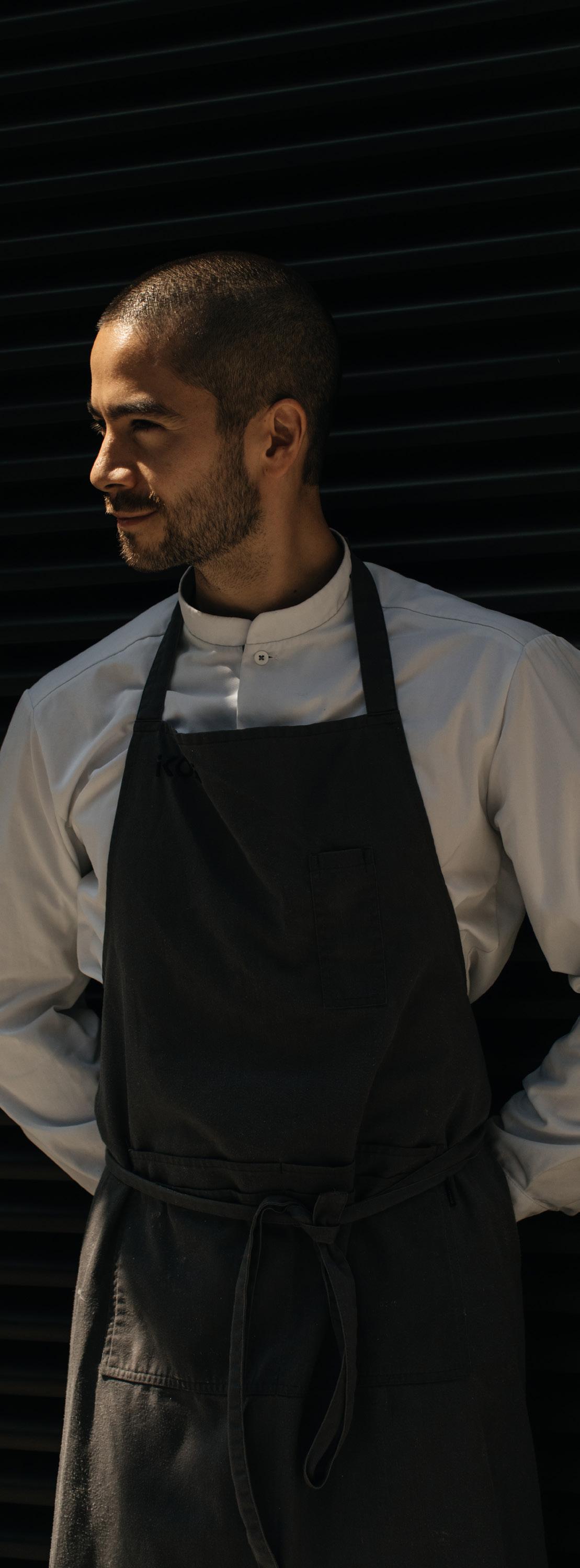
 PLANTAIN, SPICED EFO & ROASTED PEANUT ©IRINA BOERSMA
PLANTAIN, SPICED EFO & ROASTED PEANUT ©IRINA BOERSMA
Ikoyi is located at 180 The Strand, a 5 minute-walk from Temple Underground station on the corner of Surrey Street and The Strand.
Since opening in 2017, Ikoyi has distinguished itself as a pioneering restaurant in constant evolution: a true form of global modernism - placeless, free, unfixed and personal – whilst symbolising the energy of its international city home. With strong bold dishes that celebrate the finest, hyper-seasonal British produce, combined with an extensive global store cupboard of ingredients, menus are a contrast of elegance and balance, married with the fearless enjoyment of the taste and flavours of the season.

The complexity of the cuisine is celebrated with a wine list of carefully chosen varieties that match the intricate balance of its dishes. The selection of grapes and producers allow lesser-known areas to shine, while showcasing some rare examples from more classic regions. A non-alcoholic tea pairing can be enjoyed solo, or mixed with chosen wines.
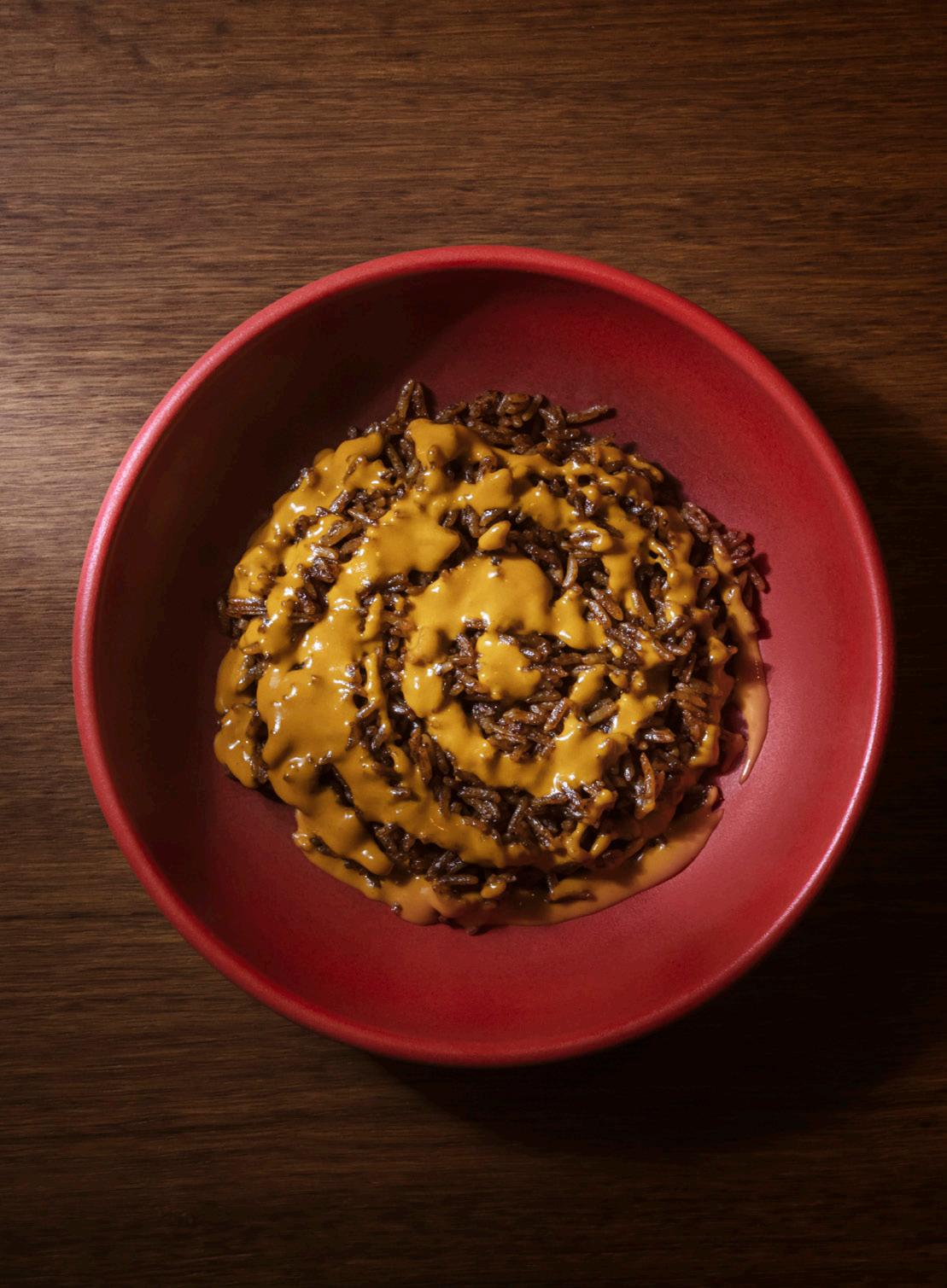
Interiors have been created alongside Danish architect and designer David Thulstrup. With an open kitchen, generous dining room, outdoor terrace and private dining space, the material palette of copper, stone, steel mesh, leather and oak creates a space of drama and calm, forming a cohesive union of all four spaces. A restaurant of energy, warmth and sensory experience, where the elements of the interior coalesce with the craft and precision of the kitchen.

“the menus surprise the senses with a balance of heat and umami, with dishes imagined in the first instance artistically for visual impact and only then are recipes created”MUSSEL CUSTARD, SAFFRON AND N25 KALUGA CAVIAR ©IRINA BOERSMA SMOKED JOLLOF RICE ©IRINA BOERSMA

 ©GABRIELE STABILE
©GABRIELE STABILE
Valentino Cassanelli grew up in Spilamberto, a small town in the countryside outside Modena. Already curious about food and greatly inspired by his grandmother who was an excellent home cook, Valentino developed a strong sense for the quality of local produce and watching and learning the processes of preparing seasonal produce to provide daily meals for the family.
Not surprisingly, these influences lead him from school straight to catering college in Serramazzoni, where at the young age of just 16, he was sent for initial work experience in the kitchens of the famous London restaurant Floriana in Beauchamp Place in Knightsbridge. He then returned home to complete his course, working to gain professional experience in a more traditional restaurant in Modena. After graduation, the lure of London’s dynamic restaurant scene saw him back in England, gaining experience in Mosaic in Mayfair, Locanda Locatelli in Marylebone and Nobu on Berkeley Street.
In May 2007, Valentino returned to Italy to work under two Michelin starred Carlo Cracco in Milan, where he was to remain for three years. Motivated by the strong team, he built a lasting relationship with Carlo, joining him at events internationally and climbing the culinary ladder ultimately gaining the position of Junior Sous Chef.
In 2010, Valentino was asked to join two chef friends at their popular restaurant Sangal in Venice. The synergy between the three young, talented chefs was immediate and with a shared philosophy in pushing boundaries with techniques and ingredient combinations, Valentino was able to grow, not just in confidence but also creatively. Whilst still at Sangal, he received an invite from Carlo Cracco to join the team he was putting together for a pop-up at Principe Forte dei Marmi during August 2011. Around this time the hotel team were also looking to change their internal food and beverage offering and a few months later, with Carlo’s recommendation, the position to lead the project was offered to Valentino. He arrived at Principe Forte dei Marmi in February 2012 and three months later, restaurant Lux Lucis opened to huge critical acclaim. It gained its first star in the Michelin Guide Italy 2017.
 FRAGOLA, RISO E CALAMANSI ©GABRIELE STABILE
FRAGOLA, RISO E CALAMANSI ©GABRIELE STABILE

Valentino’s dishes are a free expression of Italian cuisine, with an unrestrained creativity, drawing not only from his own life experiences, but also the rich biodiversity surrounding the coastal town of Forte dei Marmi.
Inspiration comes from his close collaboration with Maître Sommelier Sokol Ndreko, with dishes often beginning with the flavour profiling of particular wines. The results are menus that are delicately balanced and elegant, happily journeying from land to sea and delivering the very best in seasonal ingredients. This unconditional partnership between cellar and kitchen, flawlessly interweaves the restaurant’s carefully curated selection of fine wines and vintages with the kitchen’s natural storecupboard, perfectly enhancing the intricate flavours of Valentino’s dishes.

Situated on the rooftop of Hotel Principe Forte dei Marmi, in a stunning landscape caught between mountains and sea, the 28-seat restaurant is ideally positioned to capture the aureate evening light, offering panoramic views over the town’s stone pines to the Apuan Alps in the east and westwards over the Tyrrhenian Sea. The dining space is surrounded by glass floor-to-ceiling windows, and features an open kitchen and marble sculptures by Korean artist Park Eun Sun. The tailored tablecloths emphasise the table design, part of the Maxalto collection by Antonio Citterio, with their characteristic parallel legs.
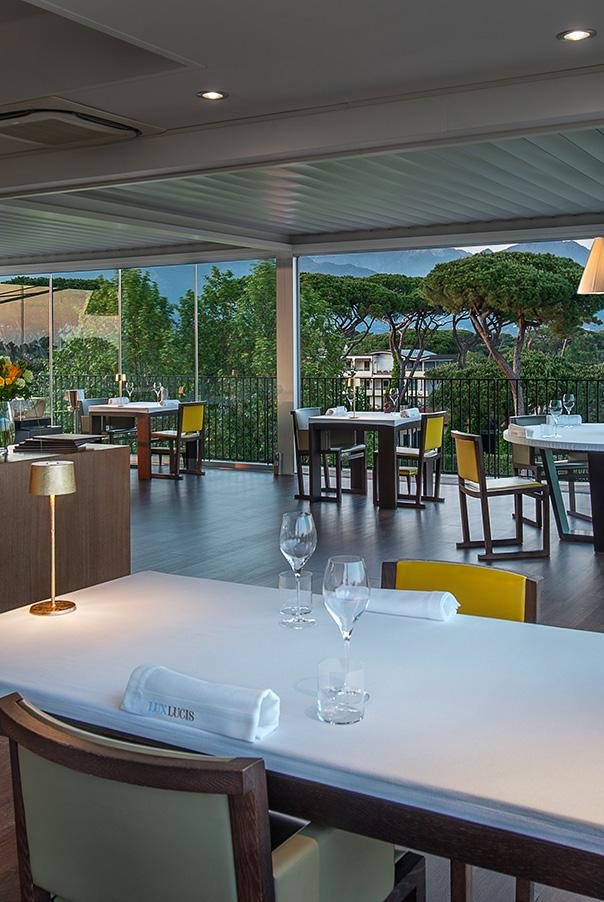
A more intimate and exclusive dining experience is available at the Chef’s Table, featuring a more informal seat on a stool and the particularity of being served directly by the chefs. The seven-course journey is expertly paired with wines and cocktails by maitre sommelier Sokol Ndreko and barman Omar Caceres, and reserved to a maximum of four guests per service. On the same rooftop, the award-winning 67 Sky Lounge bar offers a magnificent setting for aperitifs and after dinner. In addition to an extensive drink list comprising distinctive twists of Tuscan classics and original cocktails, during the winter season, the bar hosts the “Taste of Lux Lucis” menu, a more casual and streamlined selection of Lux Lucis’ iconic dishes.
In a joint effort with the whole team of Principe, chef Cassanelli and his brigade continuously implement practical steps to become fully sustainable, paying homage to the surrounding smaller realities. Their commitment includes - and is not limited to - the elimination of single-use materials, installation of implants for renewable energy, and reduction of waste throughout the hotel. Valentino is also involved in conversations with his suppliers to select and ensure that what arrives in the kitchens is as much as possible “zero kilometres” and are sourced only from producers who respect the local environment, with the related government certifications. In his creations, there are ingredients unique to the territory, some of which have become more popular especially thanks to the collaboration with chef Cassanelli, like the Pastinoncello di Seravezza. The carrot, which was lost in the region’s agricultural practices, was preserved only as study samples for the University of Pisa. After tasting it and hearing about its story, Valentino fostered a broader production of the rediscovered vegetable by making good use of it in his dishes.


Riccardo Canella was born and raised in the countryside surrounding Padua, about 45 kilometres from the city of Venice. Regularly shadowing his grandmother and mother from market to kitchen while foraging, growing, and understanding the rhythms of the land, his childhood was rooted in nature. At the age of six, he would wake at 6 a.m. to prepare the family’s breakfast, and by 13 years old, he was cooking in a local restaurant to gain experience whilst attending school.
Unsurprisingly, cooking was his true calling, and he would happily spend hours in the kitchen, alongside his passion, which would become another great influence. In 2004, his final year at school, he began work experience in Padua at Luigi Biasetto’s, the worldrenowned Pasticceria Biasetto, and upon graduation in 2004, was accepted on an apprenticeship. This was his first foray into a professional kitchen, and he reveled in the discipline, structure, focus, and attention to detail. A year of apprenticeship gained him experience in other restaurants. All the while, he immersed himself in the chef’s books, continuing to learn in any way he could. He also used this time to pursue his interest in music, balancing life in the kitchen with the world of music as a drummer in a band.


In 2005, the opportunity arose to work at The Albereta in Franciacorta under the revered Chef Gualtiero Marchesi, the grandfather of modern Italian cooking. Having read and researched Marchesi’s work for many years, the experience would prove to be one that had a profound impact on Riccardo’s perception of what cooking could be.
He was taught to engage with all his senses: to understand produce, meat, and fish through the acts of touch, smell, and sight, developing a completely immersive approach to cooking. As he worked through each of the kitchen’s sections, he rose to every challenge, thriving on continual learning. In addition, he found a common interest with Marchesi, also a musician and music lover, and made connections with other artistic endeavours while there.
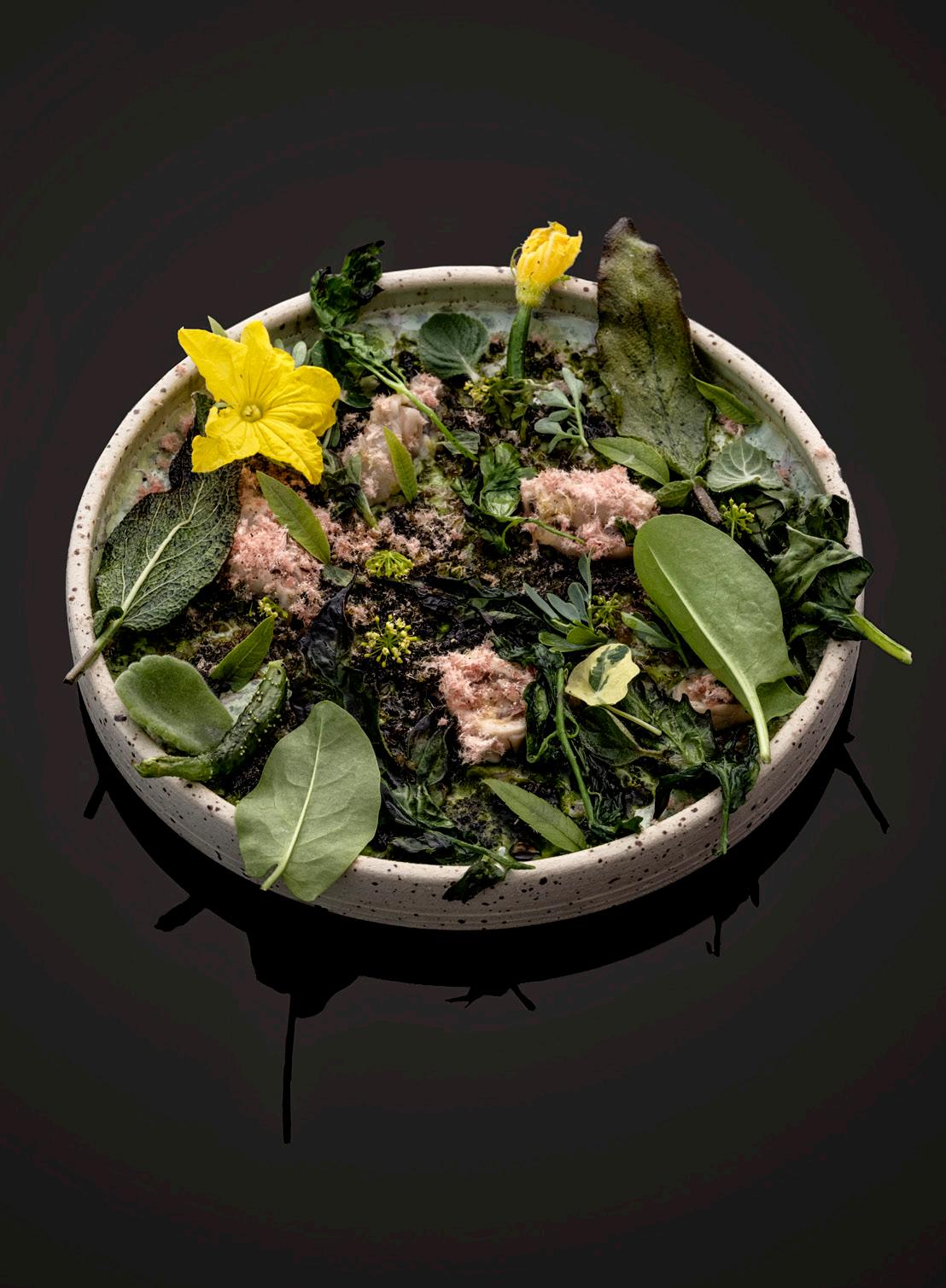
In 2006, Riccardo returned to Padua to open a restaurant alongside an ex-colleague from the Pasticceria Biasetto. The position was to lead the kitchen himself, a challenge that he readily accepted. It was an exciting time and experience when he changed the menu daily, using the finest local ingredients. Although successful, after a few years he realised that there was so much that he still wanted to learn and being back in Padua was making him restless.
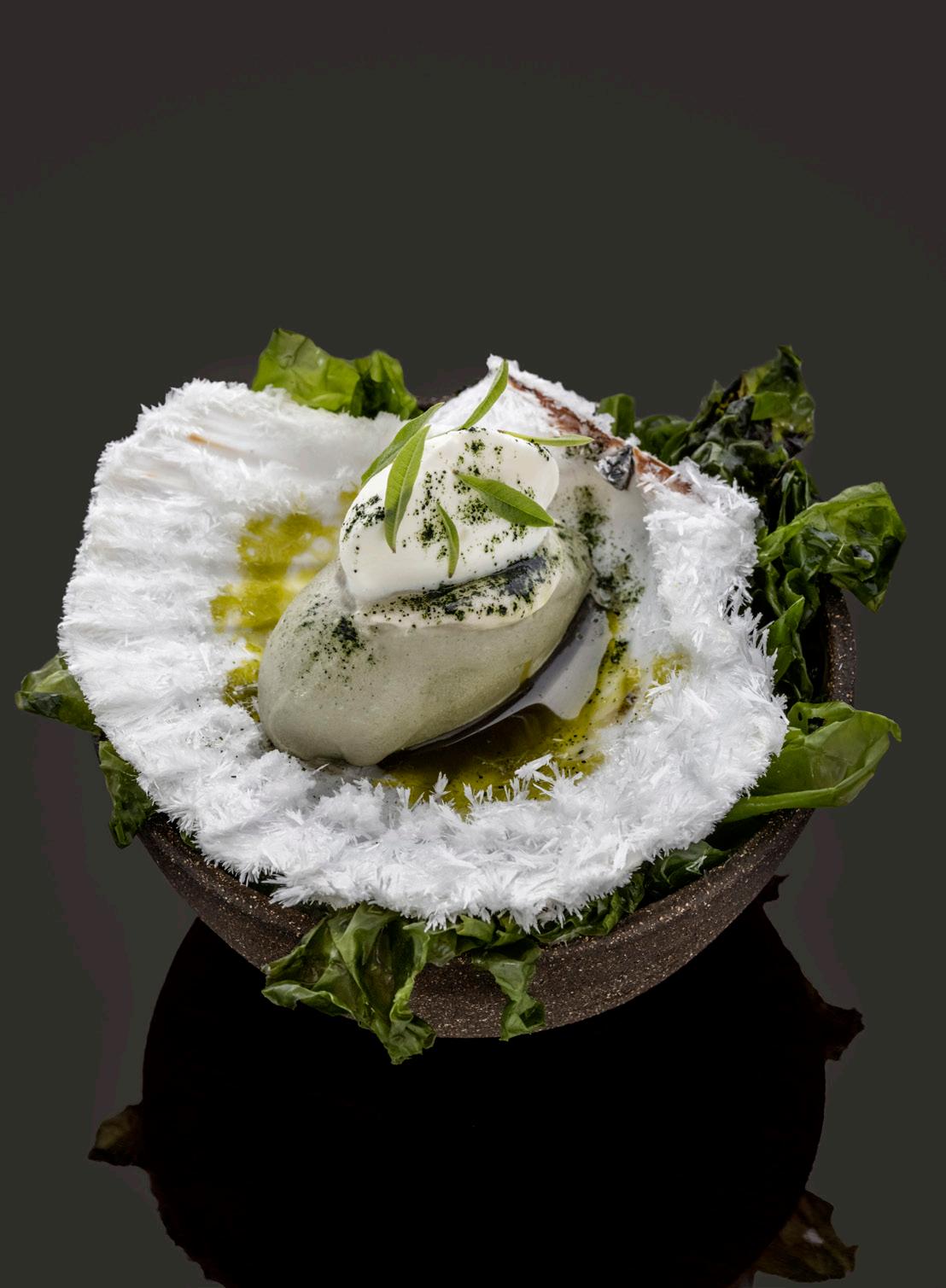
In 2008, Riccardo worked at Hotel Le Calandre in Italy before starting at Noma in January 2014. “In November 2013, I went to Copenhagen to observe for a weekend and just fell in love with the city,” he said. He accepted a further 3-month position at Noma in 2014 and, upon completion, was offered a full-time role, where he remained for seven years. Again, he was immersed in a hyper-local environment that resonated with his own cultural cooking roots. His creativity was encouraged and blossomed within this environment. His time at Noma offered many opportunities, including its 6-week run at POP in Tokyo, and his final four years were spent working on research and development in the restaurant’s acclaimed test kitchen. “My time there taught me to see opportunities around me and to look at things that may not initially have meaning,” he explained.
Returning home to Veneto and the city of Venice in 2022 comes with a sense of re-discovery and Riccardo is now forging his own language around food and cooking. Through restaurant Oro, at Cipriani, A Belmond Hotel, Venice he is melding an innate approach to the landscape, rich in the depth and breadth of Italian cooking, with the hyper-locality that is his soul. His early influences have come home, and at Oro, he instills care and respect, not just for the people he cooks for, but for the natural world around him and its ingredients, producers, and suppliers. Oro has provided the perfect platform to project his own cultural narrative into an immersive and exciting dining experience.



In many ways, Oro is a restaurant that captures the heart of Venice, its romance, beauty, and connectivity with the sea. A picturesque dining room sits at the edge of the water, immersing guests in a more tranquil side of the city, where bustle gives way to vistas. As a port, Venice has a long history of innovation, cultural exchange, and trade routes where the finest produce and artisans have crossed paths and woven their stories throughout the city.
It is against this backdrop that Chef Riccardo Canella has taken the reins of Oro at Hotel Cipriani, deepening its connection with its surroundings, and creating seasonal menus that celebrate the wealth of local and regional producers.
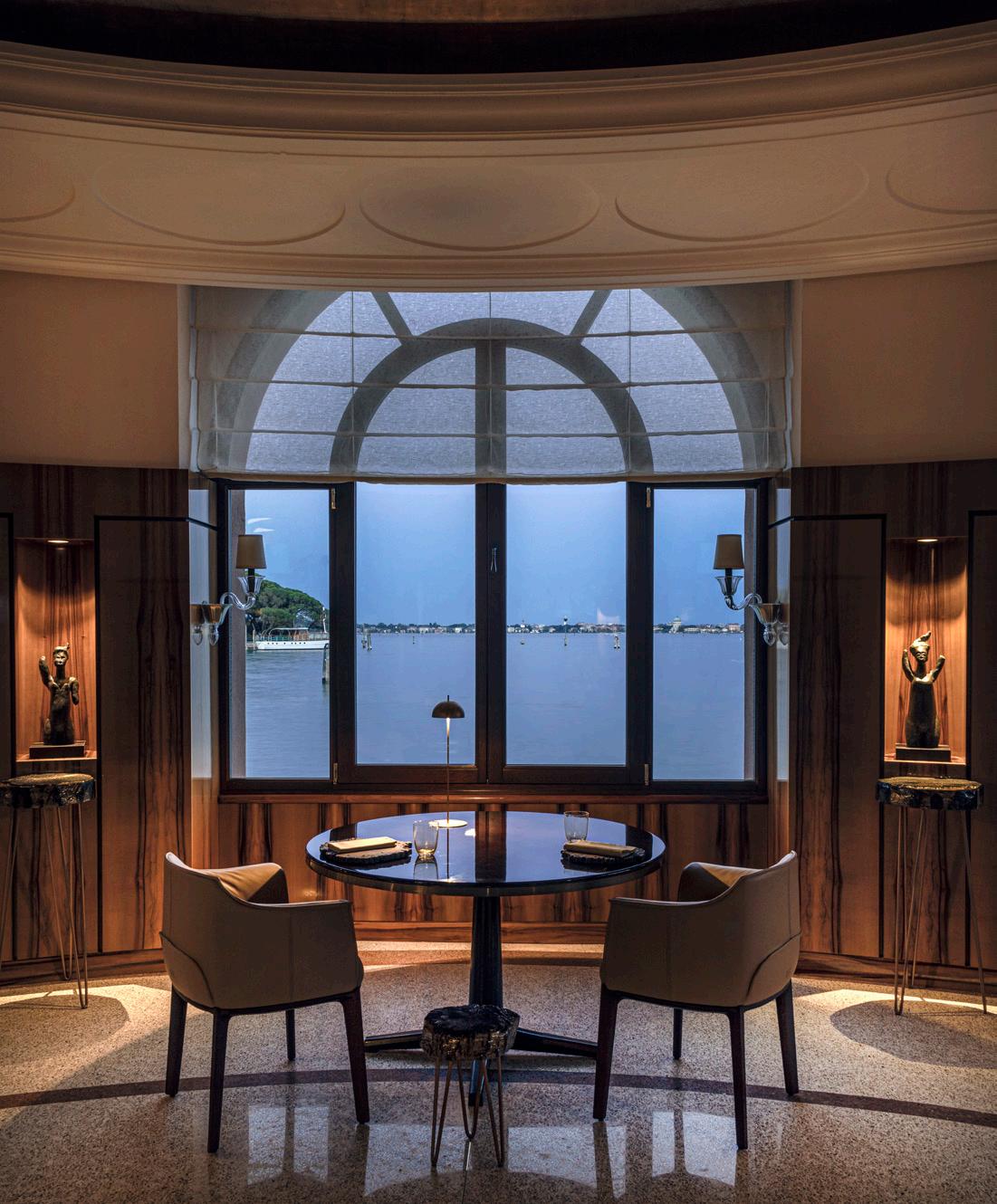

Seafood from the Adriatic Sea plays a huge part in his menu, and Riccardo has curated personal relationships with independent fishermen to ensure the finest available for Oro. “The last time I had access to fish this good was in Japan,” he explains. The menu comprises eight courses, starting with delicate snacks and small bites, followed by a series of light courses that guide the palate through the ebb and flow of flavour, becoming deeper as it progresses, before a finale of desserts and petit fours.
Oro means gold in Italian, which refers to the original gold ceiling in the dining room. But for Riccardo, its meaning has greater resonance as its origins are found in many languages and cultures around the world. He takes inspiration from gold, of course, as it’s the alchemist’s perfection in all matters, but more especially from the Greek meaning for mountain, ‘oros’, as he strives towards a pinnacle, defining his continual aspiration to excel.
His arrival reflected a new beginning for Oro - with artwork chosen by Riccardo himself, building on the essence of Belmond, rich with narrative and an illustrious past, while looking to the future with excellence, elegance, and a quiet, refined dynamism. The new menu for season 2023 is called Una Nuova Primavera.
These two dishes are the first thing that diners will receive. Un-masked is not only an homage to Venice (the city of masks) but it is also an invitation to the diner to get his mask off, an invitation to fully immerse into the dining experience. Pollen-ta pays homage to the heritage of Veneto region, this ingredient is nowadays still very common in the traditional cuisine of Veneto, however it is normally not used in fine dining restaurants. I do consider this ingredient extremely important for my roots, so I took the opportunity to present it as one of the first dishes of the tasting menu that guests will receive.


This dish pays homage to my great culinary teachers as Gualtiero Marchesi, Massimiliano Alajmo and Rene Redzepi. Inside the dish, there are traces of gold leaf. Marchesi used to put it on top of the risotto, I respect him fully, so intentionally I decided to place the gold traces in the middle/bottom of the dish, so Guests can find it while eating. The liquorice powder is a link to Massimiliano Alajmo as he was the first one to use it, while the bee pollen is a thankful way from me to Rene Redzepi, he used bee pollen very often.
RISO, ALLORO, ZAFFERANO E POLLINE

Venere is the emblem of renaissance art, the incredible and rich art movement that has changed the world of art. This dessert closes the circle of the dinner, made by woodruff ice cream, blue cheese infused cream, tarragon oil and oyster sorbet, this dessert is a dinner flashback in terms of experience. Through this dessert, I want to recall the different and various tastes that guests have found throughout the previous dishes. The way we place the ice cream on the sea scallops shell reminds me of Venere in the Botticelli paint.
©BELMOND MARCO VALMARANA

 ©PATRICE GARDERA
©PATRICE GARDERA
Twenty years after her debut on the Left Bank in Paris, Hélène returned to her roots, reinventing N°4 Rue d’Assas with her new flagship restaurant, Marsan by Hélène Darroze on the original site of her Michelin-starred Restaurant Hélène Darroze in the 6th Arrondissement. Named after her home region in Les Landes in Southwestern France, Marsan opened its doors after an eleven-month refurbishment in 2019, presenting an exciting new menu and a stunningly redesigned interior.
Famed for championing her producers, Hélène created dishes that lead her guests through a lifetime of global experience and bespoke recipes, “I like people to trust me,” she explains. At Marsan, she honours the roots of her culinary odyssey, including the region of her birth – an area of wild Atlantic beaches, lush pine forests opening onto vast, golden cornfields, and a part of France celebrated for its famous duck and Armagnac. These influences of home are a thread through Hélène’s menu, the inspiration from which she approaches and creates.
Over two decades, Hélène has used the idea of home as a basis from which to create and evolve. Her menus have journeyed and developed just as she has, absorbing the influences of the globe and significant life-defining movements, from the tandoors of India and the dashis of Japan to the intricate fragrances of Vietnam, hints of her travels can be found interspersed through dishes, leaning on the finest French produce, where possible.
“I am Basque-Landaise,” she adds, “and this plays a vital role in who I am and what I create. I am made from that family and that soil – this is everything I am.” She continues, “When I was younger, maybe I tried to free myself more, but over time, I found myself going back and returning home. With Marsan, I wanted to create a restaurant that said everything about me, that shared my story while also being a platform from which I could launch a new chapter.”
When you arrive at the restaurant, you immediately notice the exterior rich in symbolism for her beloved Les Landes. Indeed, such is her connection to the space that Hélène not only poured her imagination into creating new dishes that evoke a nostalgic nod to home but also invested emotionally into every detail of the building, working with the acclaimed French architect Patrice Gardera to bring her dreams to reality. Oak wall panelling seamlessly links the spacious reception with the light-filled, first-floor dining room, and on the ground level, two private dining options. The first seating 22 guests around a specially commissioned, six-meter long ‘table commune’ surrounded by enticing views into some of the restaurant’s impressive wine collection, and the second more intimate and enclosed, seats six around a circular, slate grey table. From the interiors to the crockery and pottery right through to service and the design of staff uniforms, Hélène exercised a hands-on approach, part of the process from inception right through to delivery.
As guests ascend the stairs into the main dining room, they are greeted by the restaurant’s dramatic kitchen with a dedicated six-seat Chef’s Table. Past a display dresser that has been created to pair with the light oak panels of the walls, Hélène displays some of her most personal items, including photos of home – with her two daughters Charlotte and Quiterie, and as a young child playing with her brother Marc – and of the Darroze family inn, the Hotel des Voyageurs in Villeneuve-deMarsan. She has also included silver dishes and birds that adorn the tables, and there is a wine list from her beloved grandfather Jean and the recipe book of her grandmother Charlotte, an old family daubière and an assortment of chef books. All offer snapshots into the life of Hélène Darroze. Finally, the simple, stripped-back table settings with their bespoke ceramics encourage diners to touch and admire the crockery on display, preparing them for the theatrical offering each diner experiences at Marsan by Hélène Darroze.
CUTTLEFISH, MUSSELS FROM GIOL, RAZOR CLAMS, FENNEL AND WHITE PEACH, SHELLFISH JUICE WITH SAFFRON PISTILS, BLACK GARLIC CONDIMENT ©BERNHARD WINKELMANN


SCALLOPS, TRUFFLE AND BUTTERNUT, PARMESAN EMULSION ©BERNHARD WINKELMANN


To understand Italian chef Ciccio Sultano, you must first understand his earliest influence, Sicily - the ancient, Italian island of his birth. If Italy is a country passionate about its history, produce and cuisine, then Sicily is hailed, as the locals will tell you, as a ‘continent’ with its own history.
Physically detached from the mainland and closer to Africa than Europe, its peoples have adapted over millennia to invasion and foreign domination. Phoenicians, Greeks, Arabs, Normans and Spaniards have come and gone, leaving behind influences of their food, wine and customs that Sicilians have absorbed and melded to their own, creating a unique gastronomic treasure trove.
Against this backdrop of uncompromising commitment to region, food and wine, the young Ciccio Sultano’s benchmark was set and at just thirteen years old, he took a part-time job at a local pasticceria (pastry shop), in the town of Vittoria. Naturally curious with a boundless enthusiasm to learn, the teenager caught the attention of the owners and his position evolved into a full seven-year apprenticeship. While he learned how to work with guests, in his free time he began reading gastronomy magazines and books from where he was following the careers of chefs Paul Bocuse, Alain Chapel and Alain Ducasse, teaching himself new techniques.
Almost immediately after joining the team at a local spaghetteria, the restaurant became a huge success, with locals hailing the young Ciccio’s take on the menu’s dishes. Buoyed by his first flush of success, he realised he had found not only something he loved - in cooking, but also something he shared a natural affinity with – the abundance of his island’s exceptional produce.
©MATTHIEU CELLARD
©MELISSA CARNEMOLLA
“The menus are an elegant and continually evolving portrait of Sicily, referencing the island’s unique regions and produce and the myriad of invading cultures that, throughout history, have come to define it. The intricate balance of Sultano’s dishes is celebrated by an award-winning wine list that proudly boasts over 50 percent Sicilian labels that help to seamlessly root the cuisine to the winemaking history of the island”
This was the point when he realised he wanted one day to open his own restaurant in Sicily. However, he was enough of a realist to understand the rigours and demands of owning one and if he wanted to learn also from time spent away from Italy, now was the time to do it. A move overseas then followed, with a period in Germany honing his meat cookery, before joining the kitchens in New York of the famous restaurateur, author and television host, Lidia Bastianich.
Sicily though coursed through his veins and he realised that what he missed most about his birthplace, was not only the quality and availability of some of the finest produce he knew, but also the undeniable generosity of the Sicilian spirit. He returned to his hometown of Ragusa and in 2000 realised his dream and opened his first restaurant, Duomo. Building on his own cultural heritage, he added the knowledge he had gained overseas and created menus that showcased classic Sicilian ingredients with an eloquence and subtlety in execution that gained the restaurant immediate critical acclaim. In 2004 Duomo was awarded its first Michelin star, with a second following two years later.
As Duomo eased into its position within the culinary landscape of Ragusa, with boundless enthusiasm, Ciccio began to consider a second offering in the hillside town. Inspired by traditional, simple counters set up by small producers, selling everything from bread, cheese and salami to pastries and wine, the concept took shape. In 2015, he opened I Banchi, a contemporary take on a traditional trattoria. Drawing together an imagined collection of these counters, with the daily staple of bread at its core, the restaurant offers guests everything from breakfast, lunch, coffee, snacks through to more elegant dinners in the evenings.


©MELISSA CARNEMOLLA
©MATTHIEU CELLARD
CIRCULAR FISH FROM CIRCULAR ECOSYSTEM OF MANGROVIA ©MELISSA CARNEMOLLA

 WARM RICOTTA, CAVIAR, WHITE PRAWNS AND HERBS ©MELISSA CARNEMOLLA
WARM RICOTTA, CAVIAR, WHITE PRAWNS AND HERBS ©MELISSA CARNEMOLLA
“Sultano’s first book, which takes its title from the menu: an atlas, a narrative and a recipe book, a declaration not only of gastronomic heritage, but also of the Sicilian, Mediterranean, European and, therefore, contemporary culture”

Ciccio opened for the first time outside his beloved Sicily in 2018. Located in The Ritz Carlton on Vienna’s iconic Ringstrasse, just walking distance from the famous Staatsoper, he brings contemporary Sicilian cuisine and drinks to Austria’s historic capital city. Named after “pasta amara” - a bitter paste made from cocoa beans – Pastamara offers guests a true taste of Sicily from breakfast through to dinner.



In 2019, Ciccio inaugurated Cantieri Sultano, a multifunctional extension next to Duomo, operating as an experimental and development kitchen for his chefs; a space to hold masterclasses and demonstrations; and also a comfortable and atmospheric location where guests of the restaurant can linger pre or post dinner, with an aperitivo or digestivo.
Autumn 2021 saw the arrival of Ciccio’s Cucina Educata in Rome, with Giano restaurant, inside the first W Hotel (part of Marriott International) in Italy. A rustic and contemplative cuisine, elegant and refined, the bold culinary offer of Giano combines traditional and authentic Italian ingredients with contemporary influences.
Andrew Wong is a chef, anthropologist and cultural observer. Born and brought up in London, he has been immersed in the world of restaurants since childhood. In 1985, Andrew’s parents opened a Cantonese restaurant, Kym’s, named after Andrew’s grandmother, which is now the present location of the Michelin star restaurant A. Wong in Pimlico.
Andrew left school to study Chemistry at Oxford University before transitioning to Social Anthropology at the London School of Economics, where he recieved his first degree. After Andrew’s father sadly passed away, his focus was returned back to an integral part of Wong family life, the restaurant. Determined to build on the family business, Andrew enrolled himself in Westminster Kingsway College where he specialized in classical French Cookery and Culinary Science.
In 2010 he left London and set out on a working tour of China, studying at the Sichuan Culinary Institute as well as gaining practical experience in kitchens up and down the country. Bursting with inspiration and fascinated by how food differed so dramatically according to region and local custom, Andrew opened A. Wong. Since opening, Andrew has introduced diners to the crosscultural delights and the incredible variety of Chinese cuisine. His cuisine is an intuitive expression of tradition, authenticity and craft.

‘MEMORIES OF PEKING DUCK’ WITH SEARED FOIE GRAS AND PLUM SAUCE ©JAMES GILLIES
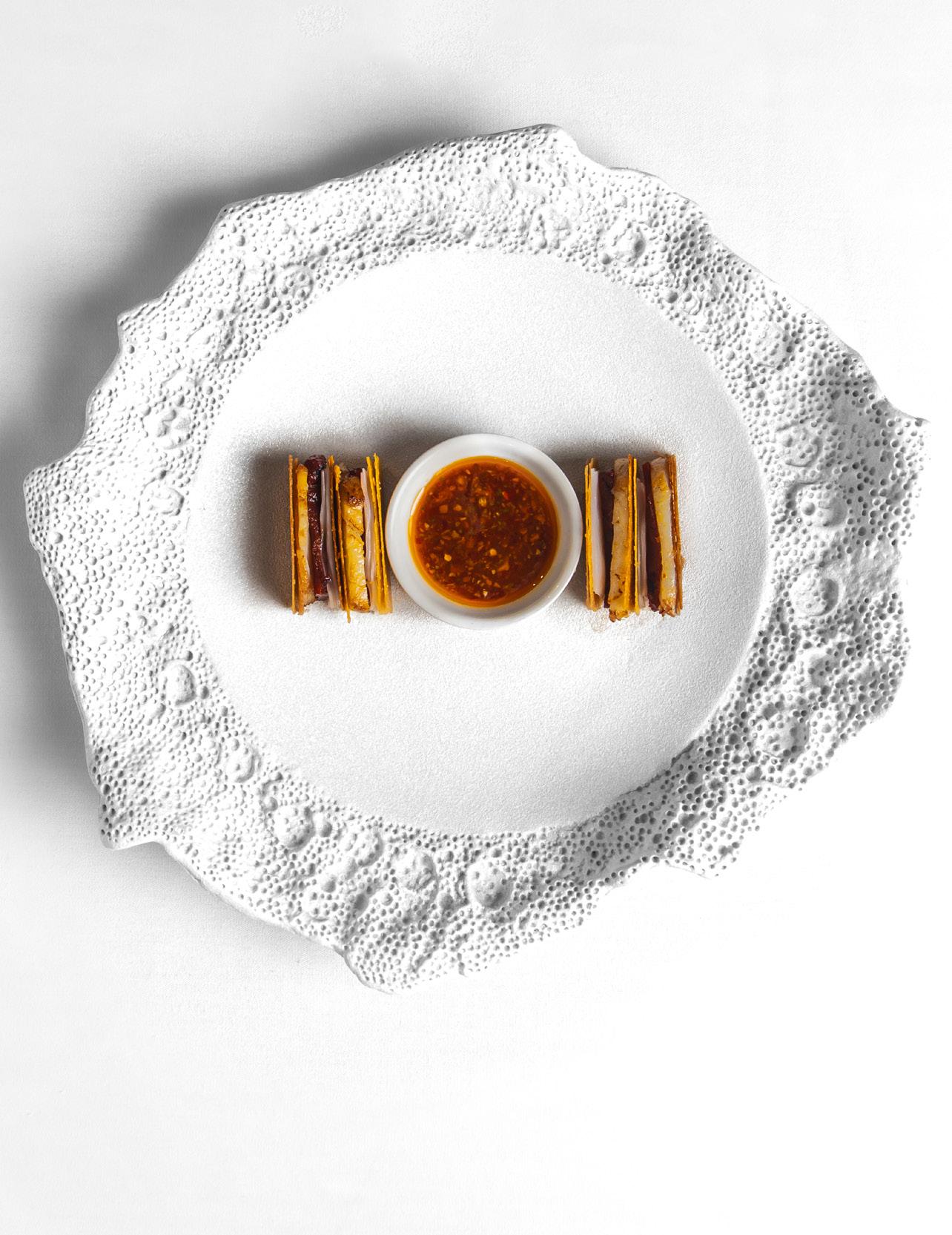
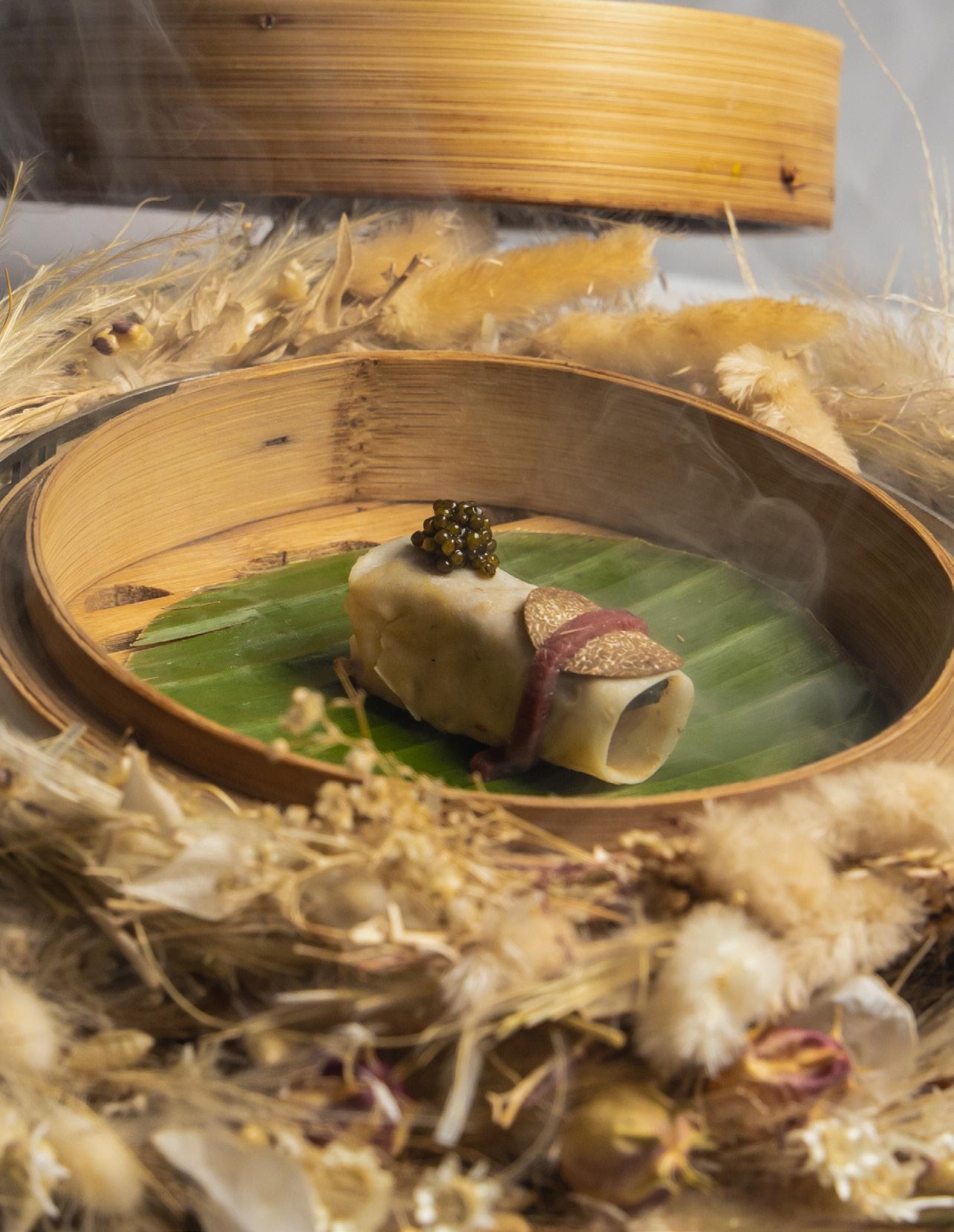
‘THE CANTONESE KITCHEN’ BARBECUED PORK CRACKLING WITH PRAWN, PLUM AND TRUFFLE ©JAMES GILLIES

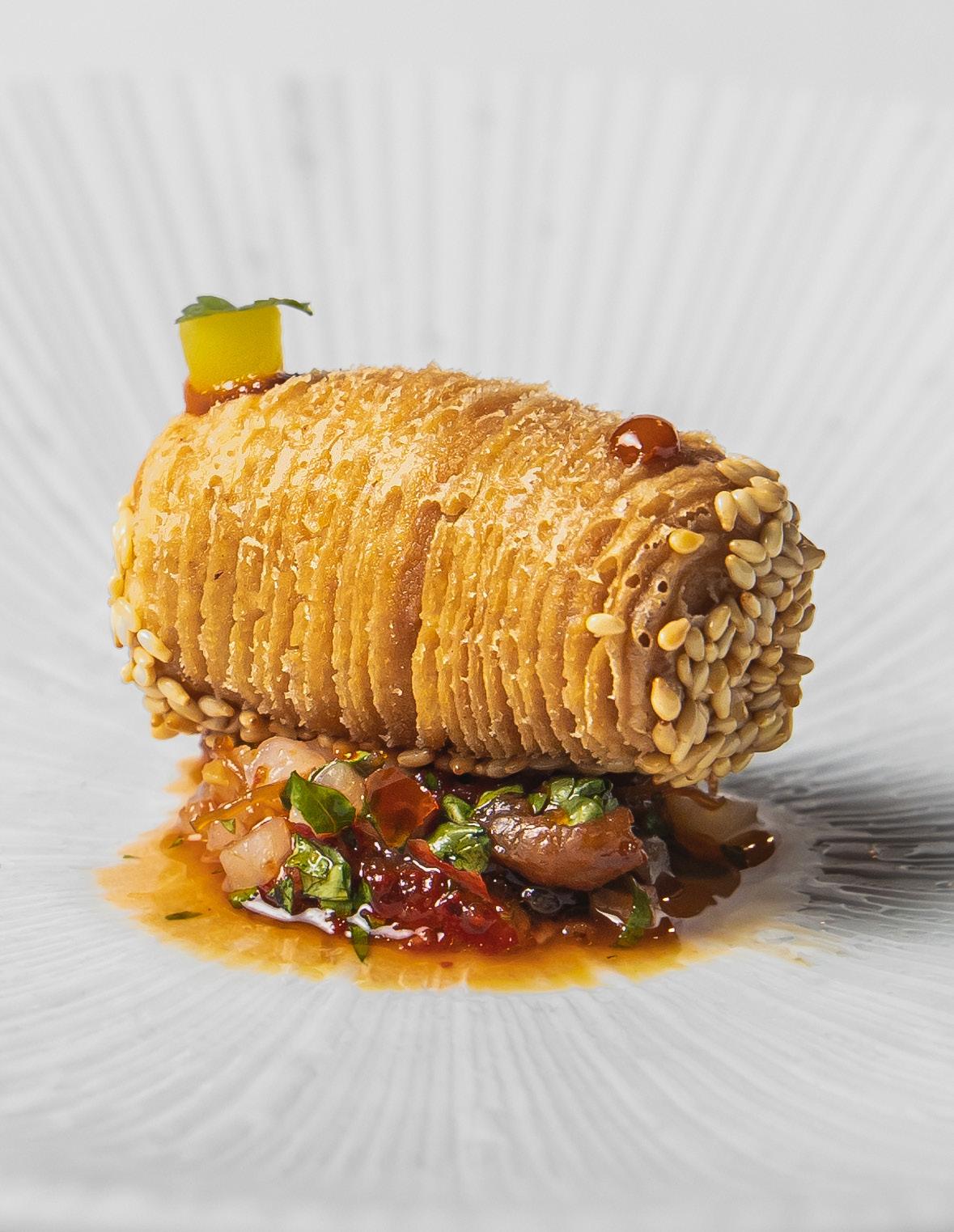
999 LAYERED SCALLOP PUFF WITH XO OIL ©JAMES GILLIES
ISLE OF MULL SEARED SCALLOP AND HONEY GLAZED IBERICO PORK CHEUNG FUN ©JAMES GILLIES
After years of collaboration with Food Anthropologist, Dr Mukta Das, Andrew officially became a Research Associate at SOAS Food Studies Centre in May 2020. The pair use ancient recipes, poetry, literature, and academic texts as a springboard for developing new dishes, ideas and theories around Chinese cuisine. Andrew seeks to continue this work in championing China’s rich culinary landscape, always using culture to discover what the future of Chinese gastronomy is and has the potential to be.
Andrew Wong is a chef, anthropologist and cultural observer. Born and brought up in London, he has been immersed in the world of restaurants since childhood. In 1985, Andrew’s parents opened a Cantonese restaurant, Kym’s, named after Andrew’s grandmother, which is now the present location of the Michelin star restaurant A. Wong in Pimlico.

Andrew left school to study Chemistry at Oxford University before transitioning to Social Anthropology at the London School of Economics, where he received his first degree. After Andrew’s father sadly passed away, his focus was returned back to an integral part of Wong family life, the restaurant. Determined to build on the family business, Andrew enrolled himself in Westminster Kingsway College where he specialized in classical French Cookery and Culinary Science.

In 2010 he left London and set out on a working tour of China, studying at the Sichuan Culinary Institute as well as gaining practical experience in kitchens up and down the country. Bursting with inspiration and fascinated by how food differed so dramatically according to region and local custom, Andrew opened A. Wong. Since opening, Andrew has introduced diners to the crosscultural delights and the incredible variety of Chinese cuisine. His cuisine is an intuitive expression of tradition, authenticity and craft.
After years of collaboration with Food Anthropologist, Dr Mukta Das, Andrew officially became a Research Associate at SOAS Food Studies Centre in May 2020. The pair use ancient recipes, poetry, literature, and academic texts as a springboard for developing new dishes, ideas and theories around Chinese cuisine. Andrew seeks to continue this work in championing China’s rich culinary landscape, always using culture to discover what the future of Chinese gastronomy is and has the potential to be.

QUAIL EGG AFRO-TEXTURE WITH GINGER RELISH
©JAMES GILLIES

July 2021 heralded a new chapter for Hélène Darroze when she announced her partnership with the grand luxury hotel, Villa La Coste, in Provence, France. Nestled at the heart of the Château La Coste Estate near Aix-en-Provence, the Villa La Coste is a modernday luxury palace celebrating authentic and exclusive refinement, in total harmony with the artistic life of the surrounding estate.

Here, Hélène orchestrates the entire food and beverage operations, offering a cuisine in her image, imbued with emotion, sincerity and authenticity. Seduced by the opulence and diversity of the vegetables and fruit from the region, she chose to award them the leading role on the menu, allowing the products from the region to take centre stage. From appetisers to end-of-meal delicacies, they lead the dance from beginning to the end.
In the fine dining restaurant, the “Walk in the gardens of Provence” menu - developed by Hélène alongside Marco Zampese, her Head Chef from Hélène Darroze at the Connaught in London, Thomas Pézeril, Executive Chef at Villa La Coste and her great pastry chef Kirk Whittle - takes place in eight acts. It will evolve and modify naturally according to the harvests and seasons.
RADISHES
©BERNHARD WINKELMANN
PIGEON AND ITS BEETROOTS
©BERNHARD WINKELMANN
VEAL SWEETBREADS


©BERNHARD WINKELMANN
CITRUS DESSERT

©BERNHARD WINKELMANN


For Santiago Lastra, cooking has always gone hand in hand with research. The science, technology and history are as much a part of what’s on the plate as the ingredients, inspiration and technique. That might sound detached, but it couldn’t be further from the truth. In KOL, his restaurant in London, he celebrates Mexican culture’s vibrancy and rich heritage through a nostalgic yet subjective contemporary lens. Additionally, he uses produce meticulously sourced from Britain, and all of these aspects, married with Santiago’s unbridled curiosity and dedication, blend to perfect Michelin-starred effect.
Born in Mexico City, Santiago was raised just south of there in Cuernavaca, known locally as “The City of Eternal Spring.” The young Santiago wanted to be a mathematician rather than a chef, competing in Maths Olympic events more attracted to research and problem-solving. This sense of curiosity inspired Santiago’s first attempt at cooking. Noticing a recipe for Crab Dip on the back of a packet of Ritz Crackers, he purchased the ingredients and prepared it for his family. Then, aged 15, he started working part-time in a local Italian restaurant. After graduating high school at 18, Santiago was offered an internship at Michelinstarred Europa Restaurante in Pamplona and moved to Spain, where he worked for two years. He returned to Mexico to study at the Instituto Arte Culinario Coronado before leaving again for Spain. He worked for fifteen months at Mugaritz while completing a Master’s Degree in Culinary Innovation at the Basque Culinary Centre.
This experience compounded his commitment to research. “I loved how they think about recipes, the research, the development, the creative element,” says Santiago, who with no intention of opening his own restaurant, was planning to return home to Mexico, and open a research laboratory after a few years garnering professional kitchen experience. From Mugaritz, like many chefs of his generation, Santiago moved to Copenhagen. Unlike many chefs, he did not head to Noma - although René Redzepi would ultimately play a significant part in his career. Instead, Santiago began a development course at the prestigious Nordic Food Lab in the University of Copenhagen, researching how to make tortillas using Nordic grains. The project proved a great inspiration, and Santiago began a series of popup events worldwide – in 27 countries - cooking dishes inspired by Mexican recipes but using local ingredients.
This took him to places as far-flung as France, Italy, Portugal, Turkey, Hong Kong, Taiwan, Japan, Sweden, and Russia, among many others. While in Russia in 2016, Santiago received a message that would change the course of his career. His world tour had introduced him to many global chefs, food writers, and journalists. When René Redzepi had his idea to take Noma to Mexico for a 7-week pop-up to Tulum in the country’s southwest, he was looking for a project manager – and Santiago’s name was recommended. Noma contacted Santiago and after meeting Rene, he was offered the job on the spot and had just nine days to organise the first research trip. Over the following months, up to the opening of Noma Mexico in 2017, Santiago learned more about his homeland’s people, cuisine, and ingredients than ever before.

His research was intensive, and as he travelled throughout the country, he discovered the people, communities, markets, and ingredients that made the cooking in all of Mexico so unique. Unlike Europe, where nationality and culture shaped many of the same ingredients, Mexico was vast and varied, and local ingredients changed dramatically throughout its regions. Inspired by the social impact a restaurant like Noma could make – and now armed with greater pride in the food and culture of his homeland – Santiago decided that his future lay in a restaurant rather than a research laboratory.

LANGOUSTINE TACO
©REBECCA DICKSON


Driven by a desire to build a community – restaurant team, local producers and suppliers, guests –Santiago sought the perfect location and settled on London.
While he jokes that it was because he was bored of sunshine, London ticked all the relevant boxes: a cosmopolitan and well-travelled population, open to trying something new; a familiarity with spice – thanks to its national love of Indian food; a city recognised as one of the world’s greatest culinary locations; a connection to Mexico – after Americans, the British are Mexico’s largest tourist group; a connection to Europe – where many of Santiago’s friends reside; and, most of all, an English-speaking media to help Santiago change the perception of Mexican food.
He opened KOL in 2020, a restaurant that merges the roots of Mexico, its culture, inspiration, and flavours with the native produce of Britain. In a career marked with remarkable achievements of culinary firsts, Santiago’s journey has only just begun.Santiago has created strong, bold menus that celebrate his homeland’s rich cultural tastes, aromas, and textures with meticulously sourced seasonal British produce. Part craftsman, part researcher, his cuisine is a contrast of elegance and balance that uniquely interprets Britain through a Mexican lens, melding the diverse landscapes and seas of both. The complexity of his cuisine is celebrated by a wine list that boasts 100% biodynamic and organic wine from Central and Eastern Europe, the minerality of which are robust and dense enough to match the intricate balance of his dishes.


Born and raised in the southern town of Caserta in the flat agricultural plains of Campania, 32 kilometers north of Naples. Like many young Italians, his earliest cooking influences came from watching and learning from his mother and grandmother. He absorbed their values in that kitchen: respect for ingredients and produce and cooking to demonstrate love towards family and friends.
By age 14 and armed with a solid foundational set of skills, he set out to gain experience in a professional kitchen, working in his free time from school in the kitchens of a restaurant in Naples. Hooked by the world of cooking, Alessandro followed his dream to become a chef (against his parents’ wishes) and enrolled in a five-year course at a culinary school in Cassino, a city close to Rome.
Alessandro’s focus after graduating in 2007 was to challenge his knowledge and hone his craft at Michelin level. His evident talent earned him his first internship at the 3-Michelin restaurant Le Cimes, in San Bonnet le Froid, France, under Chef Regis Marcon. The attention to every detail and the precision in execution he learned there proved an invaluable lesson as he embarked on his career. His second internship began the following year at the 2-Michelin star Restaurant Chez Dominique, in Helsinki, under Chef Hans Valimaky, where in 2009 the restaurant was voted 21st in the “World’s 50 Best Restaurant Awards.”
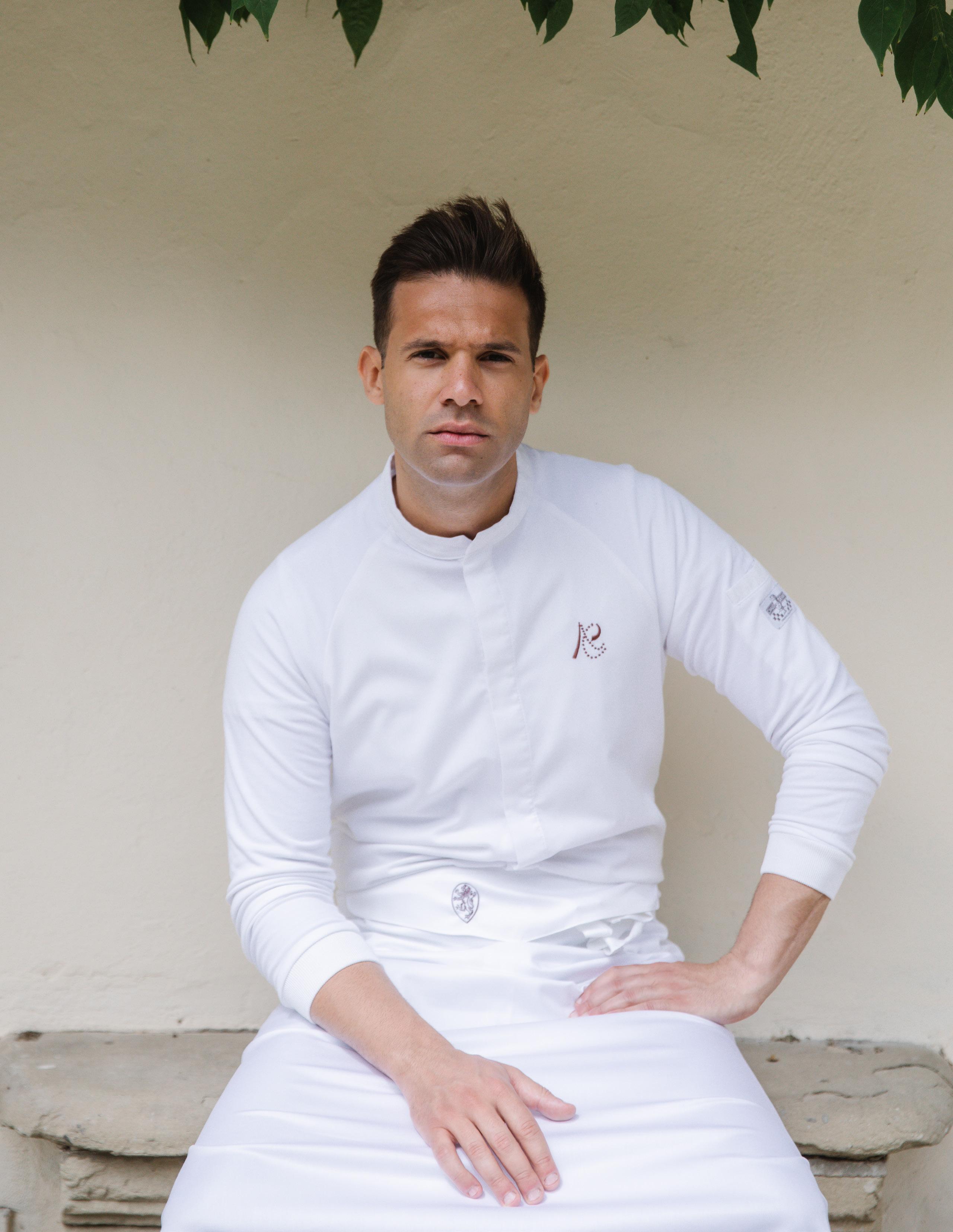

That same year, he returned to Italy, but this time to the mountains in the north and the region of the South Tyrolean Dolomites, where he spent the following two years. His first trip was to the town of Selva Val Gardena and the Michelin-starred restaurant of the Alpenroyal Grand Hotel, followed by a year under Chef Norbert Niederkofler at the 3 Michelin-starred Restaurant St. Hubertus in the Hotel Rosa Alpina in the village of San Cassiano.
By now, he had progressed through the ranks and gained experience in all sections of the kitchen. A brief time was to be spent following Chef Gaetano Trovato at the 2 Michelin-starred Ristorante Arnolfo in Colle di Val d’Elsa in Tuscany, who embedded elegance and perseverance into Alessandro’s foundation of respect and dedication and also instilled a self-awareness and understanding of his journey. By the time he had returned home to Naples, working at the 2 Michelinstarred Il Mosaico in Ischia with Nino di Costanzo, he had decided to explore opportunities in Southeast Asia – a long-held ambition after visiting a few years earlier.
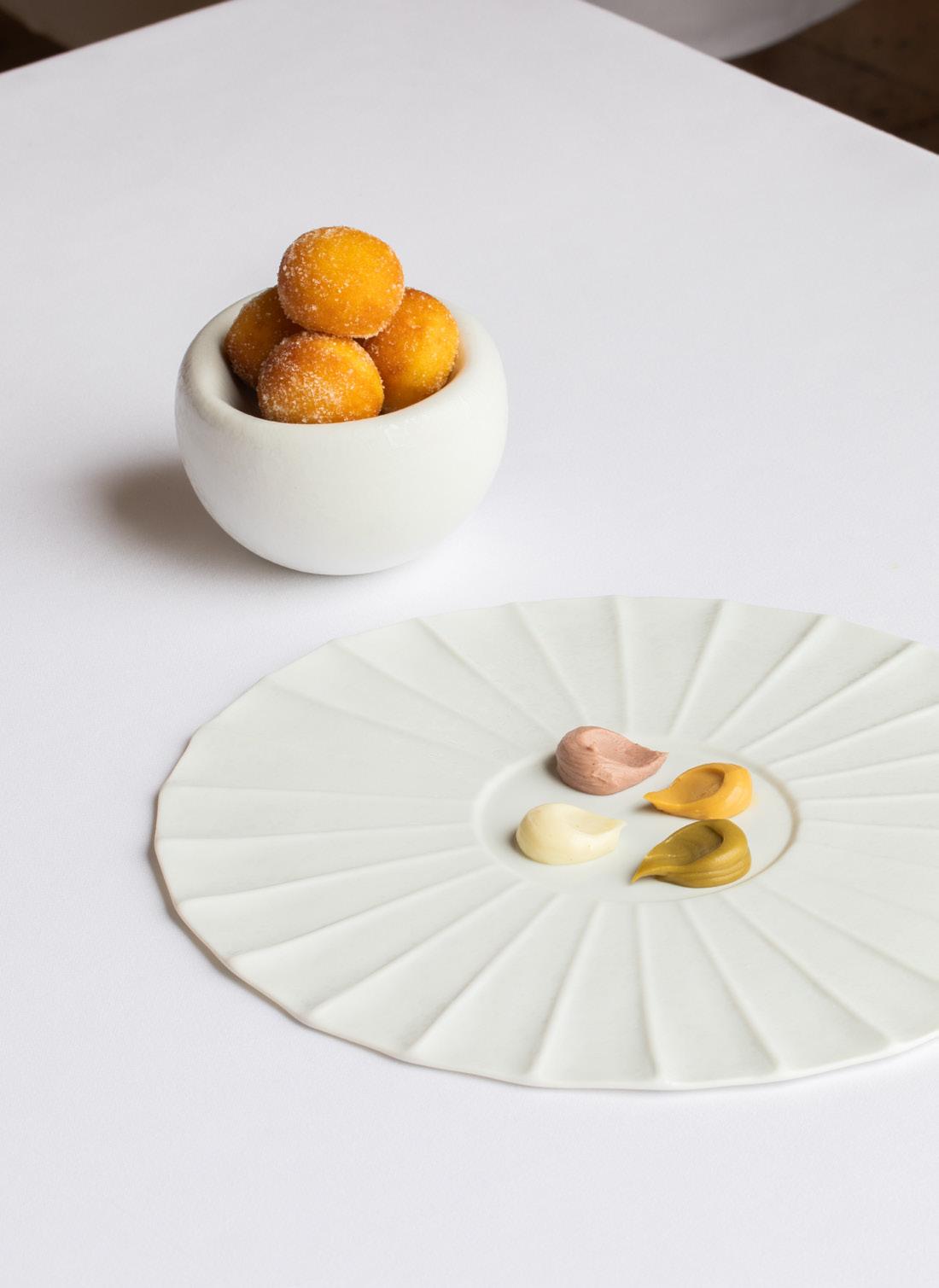

“I give freedom to my mind and let myself create combinations of shapes and figures with ingredients and colors. The selection and design of porcelains are also a fundamental part of this process… I always try to design a porcelain that reflects my idea of plating”
In 2015, Alessandro left Europe to take up the position of Chef de Cuisine at the legendary Grissini restaurant in the Grand Hyatt Hotel on Hong Kong Island. At just 25 years old, this was to prove the opportunity of a lifetime and became his biggest adventure. Not only was it the space where he could shape the menus himself, but also an environment where he developed a broader view of cooking and one where he could share his creativity. Using his own experience - coupled with an innate palate - he passed on the skills he had learned, sharing his understanding of the finest Italian produce and its taste and flavour. During his five years at Grissini, Alessandro was awarded “Chef of the Year” in 2017 by Gambero Rosso.

In 2019, Alessandro moved back to Italy to take up the executive chef position at La Loggia at Villa San Michele, A Belmond Hotel Florence. Here he has created a culinary reflection on Florence’s culture and history. With almost 19 years of skilled experience behind him, Alessandro brings authenticity and knowledge to the menus at La Loggia, where each dish is a carefully crafted feat of gastronomic creativity. La Loggia offers a menu created for guests who wish to indulge in a sense of place, who want to celebrate Italy and Florence, and who enjoy a cuisine created to express love and family.

“Taste is very personal. Therefore, also the balance between each ingredient starts from my personal way of thinking about food. In my cuisine you will always find an element of acidity and freshness that refines all the others tastes”


Executive Chef of Tam Nam, the flagship restaurant at Belmond’s La Résidence Phou Vao in Luang Prabang, Laos. Larisa’s career progression as a chef is one of following her own heart, opening herself to opportunity, and choosing to give up a career in teaching. She grew up in southern Russia near the border with Georgia and graduated in 1994 from the Chemical Engineering College in Grozny. From 1996 to 1999, she taught chemistry in the secondary school in the town of Togliatti on the River Volga.
But it was her early childhood that she remembers with the most fondness. Her family grew their fruit and vegetables, and she learnt early the traditional skill of how to marinate, dry, cook, and pickle to preserve the harvests for the long winter months. As she grew, she fell in love with cooking and particularly enjoyed preparing lunches and dinners for her family and friends.
In the early 2000s, Larisa became inspired by the explosion of the Russian restaurant scene. With many new and exciting ingredients available, she opened herself to new challenges and moved to Moscow. She started to split her time between working in professional kitchens and studying food technology. By the time Larisa graduated in 2013, she had already gained several years of experience working in professional kitchens. Her first job was at the Japanese restaurant Asia Café, where she progressed from sous chef to Executive Chef. From there, she moved in 2010 to the restaurant Mr. Lee as Sous Chef under Kent Lee, formerly of Hakkasan in London. She stayed for two years before following him to St. Petersburg, where they opened the Chinese restaurant Tao, swiftly declared one of the city’s best restaurants.
“The menu at Tam Nan mixes Larisa’s knowledge and experience with a selection of authentic Laotian recipes as well as new dishes made using traditional Laotian methods, such as sun-drying, fermentation, grilling over charcoal, cooking in banana leaves, bamboo, and fresh coconut, and slow cooking in clay pots”
She had discovered a passion for Asian cuisine and fallen in love with their use of spices, bold flavours, textures, skills, and techniques, all of which continue to inspire her today. Staying in St Petersburg, Larisa embarked on a new adventure as Chef de Cuisine at Azia Restaurant at the Grand Hotel Europe, A Belmond Hotel. Thanks to this new role, she had the opportunity to travel to other Belmond properties, such as the Copacabana Palace in Rio de Janeiro and the D’Angkor Residence in Cambodia.
In 2021, Larisa was approached to reopen La Residence Phou Vao, Luang Prabang, Laos, as the hotel’s executive chef and to lead the restaurant, Tam Nan.
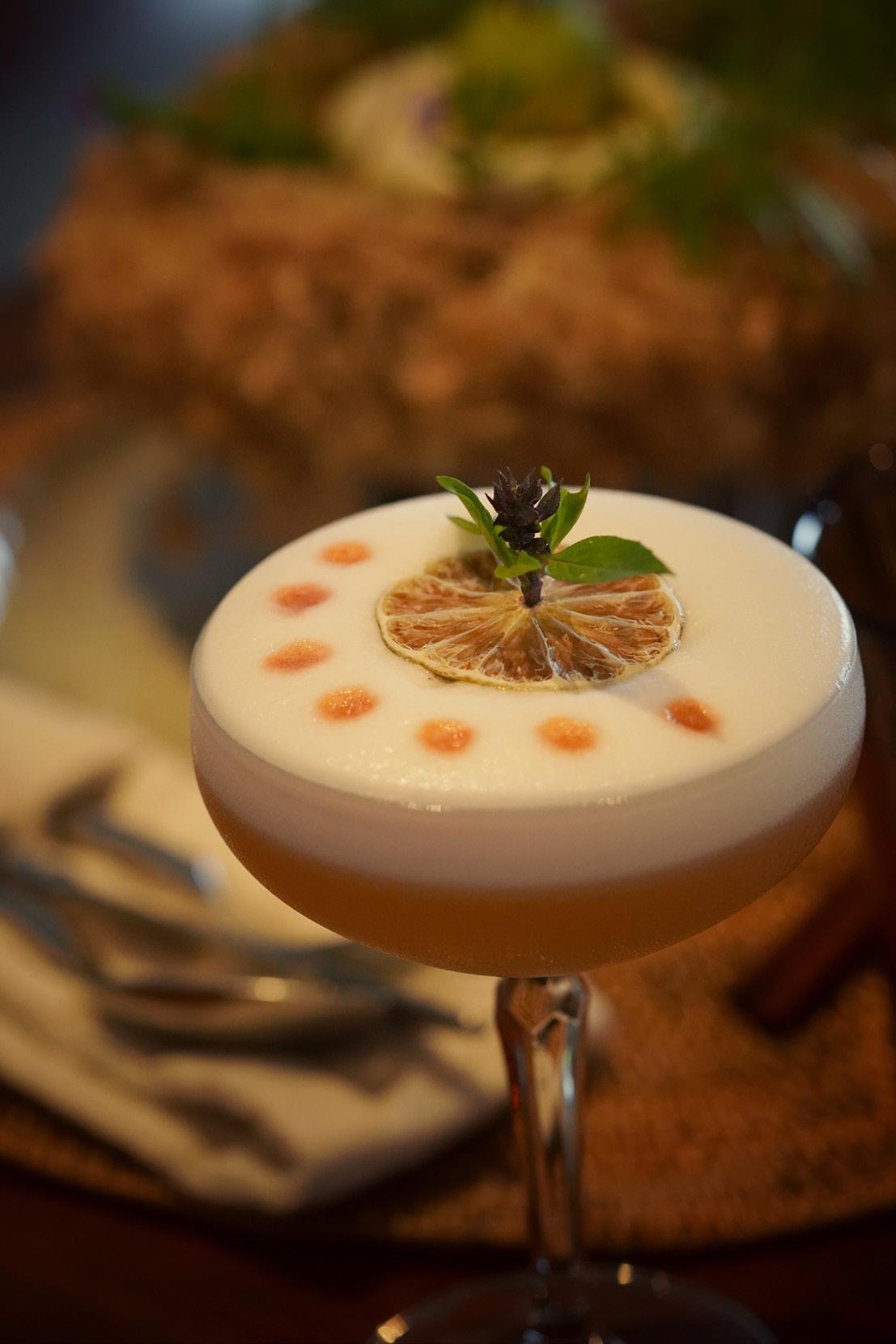
Larisa brings her culinary talent and knowledge to a menu rooted in Laotian heritage. Her dishes feature a vast range of local organic ingredients and classic recipes, utilising the traditional cooking methods of banana leaf, clay pot, sticky rice, and charcoal that have come to define this cuisine.


Florence-born chef Simone Caponnetto is Executive Chef at Locale Firenze. Although his career path is a veritable odyssey through the kitchens of some of the global gastronomic greats, his food is rooted deeply in the flavours and produce of Tuscany. His ingredients are, wherever possible, not just Italian but purely Tuscan. Many chefs born into the heritage of such a famously rich food and wine region, would be kitchen obsessed, having been taught to make pasta at their nonna’s side or helping their mother choose the finest ingredients from local markets in beautiful hill-towns under the summer sun. But for Simone, the opposite was true. Cooking was of no interest to him. What had captured his imagination as a teenager was the work of Jack Kerouac, the American novelist, poet, and pioneer of the Beat Generation. The moment his schooling was over at the age of 18, he booked a flight and headed to America. It was in an American Italian restaurant in uptown Greenwich, (Connecticut) that Simone’s first introduction to the restaurant world began. However, it was work that was born of necessity. He wanted to travel across the U.S. - just as Kerouac had done in his famous novel “On the Road” - and the shifts he put in funded this trip and his flight back home.

 AGED GROUPER WITH MISO TRUFFLE AND PERIGORD SAUCE
AGED GROUPER WITH MISO TRUFFLE AND PERIGORD SAUCE
Now all he wanted to do was travel, and his attention turned to Australia. Just as in the U.S., he found work in a restaurant to fund this, this time in Sydney at the award winning, 1 Hat, Arras Clarence Street. It was a significant step up the culinary ladder, and Simone worked alongside a pastry chef from Naples. As well as learning a lot about pastry, Simone also started to hear stories about other inspirational restaurants and the chefs his new Neapolitan friend had worked with, especially his stint at The Waterside Inn, which he considered the best experience of his life.
Simone continued to travel through Vietnam, Cambodia, Thailand, and India, absorbing everything around him and starting to understand the connection between heritage, culture, and food. But thoughts of The Waterside Inn lingered. When he returned to Europe, he travelled to England and started working under Alain Roux. And that, explains Simone, is where it clicked: his career began with the precision, commitment, and discipline of classic French cuisine at the three Michelin-star level.
From there, Simone dipped into the world of the private chef for a year or two, but the lure of travel had now combined with a passion for cooking at Michelin level. Japan was his first stop and a stage at Narisawa under Yoshihiro Narisawa, then back to Europe, Rome, Monte Carlo, and Bologna under Heinz Beck.


When the opportunity arose to spend time in Spain at Mugaritz under Andoni Luis Aduriz, he jumped at the chance. Here was where he learned to experiment, research, and develop, and the part that he played in the creative process. It was also where he understood the craft involved in fermentation. Simone immersed himself and became one of only a handful of stagiaires asked to remain to prepare and develop the following year’s menu. After eighteen months, Mugaritz proved to be a catalyst that changed not only his mind but also the direction of his career. It had made him realise that he was ready to return home and open his restaurant. Once back in Florence, Simone met Nerina Martinelli, a food buyer from a family with a farm nearby Settignano. She also wanted to open a restaurant, and she had a site already - a former garage in the Sant’Ambrogio district of Florence - and a name, Nugolo - after a variety of tomato that is tricky to grow but produces delicious results. “She gave me the keys, and I built it from scratch,” Simone explains of the venture. Inspired now by the local produce of his home region and country, Simone created dishes he described as simple but honest and from the heart. It was a winning formula, and as Nugolo thrived, it attracted many local admirers and visitors alike.

One of these was the director of Locale Firenze, a restaurant set within the stunning Palazzo Concini that dates back, in parts, to the 13th century. He approached Simone with the idea of expanding onto a grander stage. Simone joined in September 2021, bringing a 21st Century renaissance to the kitchen and cuisine of this historical Florentine building.
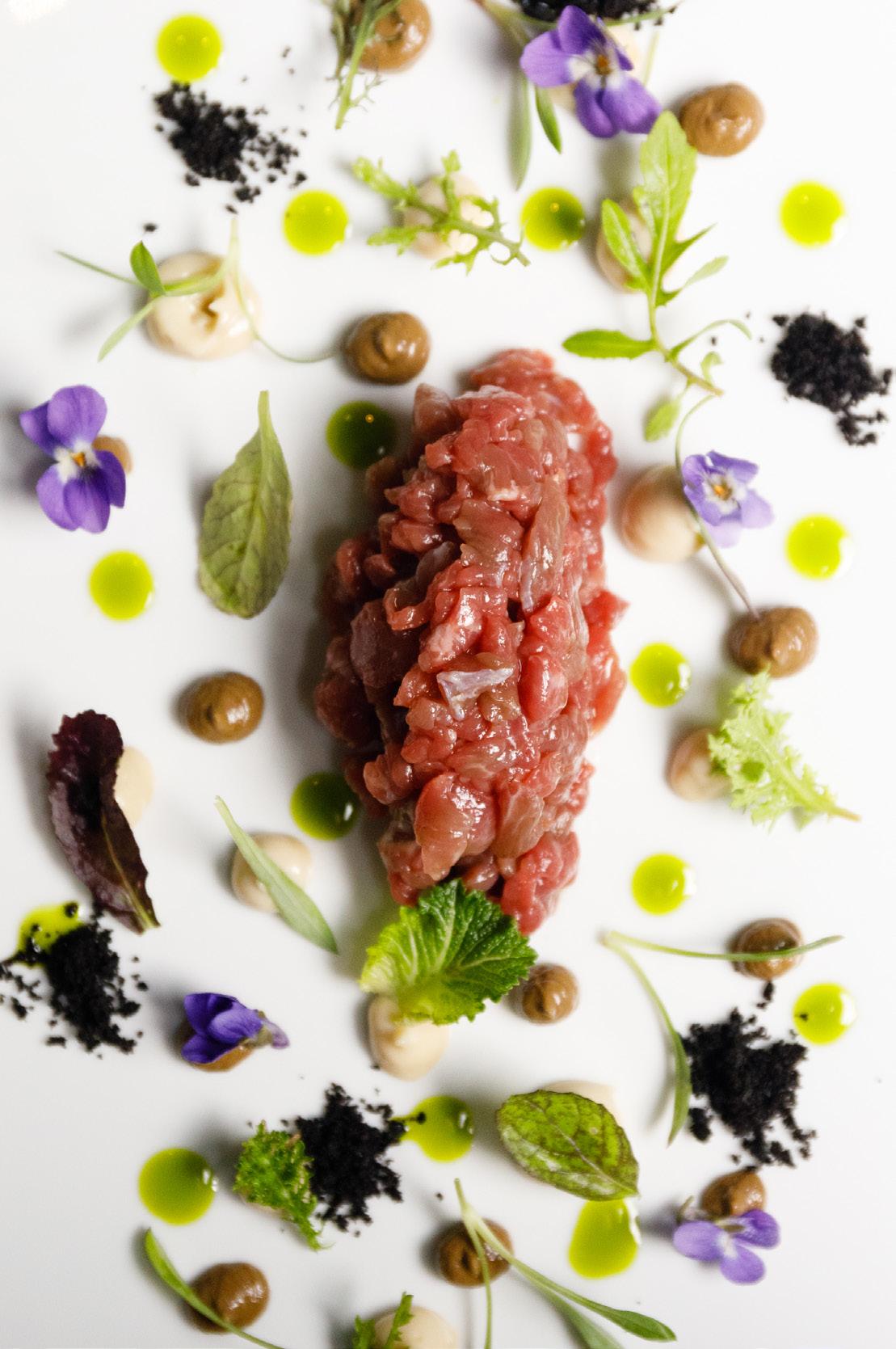

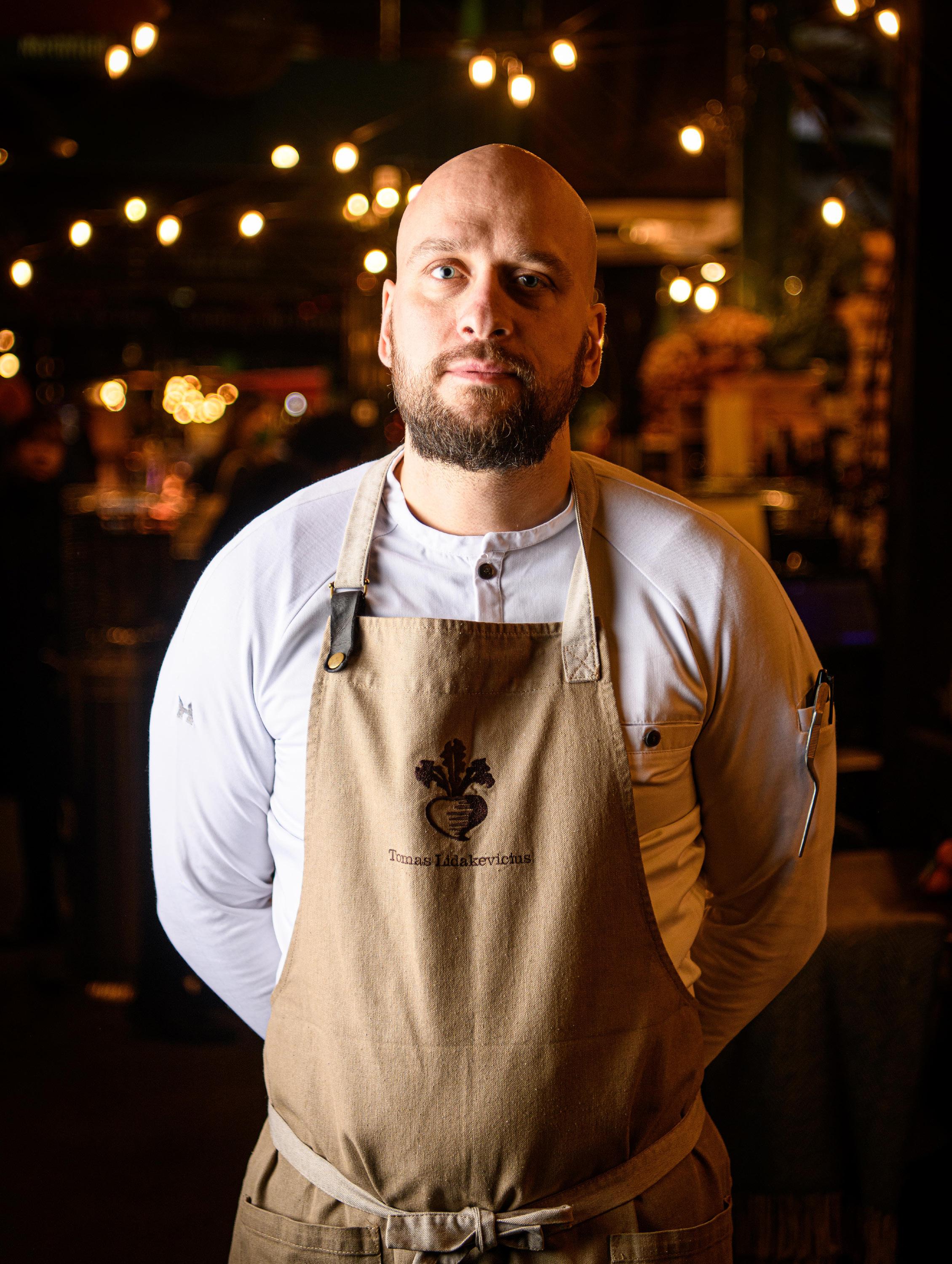
Born in Lithuania, chef Tomas Lidakevicius did not intend to be a chef. Food however played a big part in his childhood. His mother, a seamstress, worked from home and cooked daily. However when she couldn’t, his grandmother would take over and Tomas would frequently help her preserve, pickle and ferment, collecting seasonal fruit and vegetables from the market. She also taught him simple baking, starting with a cake made with a mixture of cocoa and plain batter - Zebra Cake. By the age of 16, he was struggling at school and his parents advised him to learn a trade. He chose chefs’ school. Despite his initial reservations, Tomas excelled and finished top of his class. Now armed with his certificate and just 20 years old, he took a friend’s advice and left Lithuania for London. At first, he worked on a building site. While the money was good, he knew he wanted to cook and when the earliest opportunity arose 3 months later, he willingly took a 75% pay cut and joined the kitchen brigade at a now defunct private members club. It was his second role, however, that opened Tomas’ eyes to the potential of his chosen career. Joining the team at Galvin at Windows, the exposure to the adrenaline and discipline of a Michelin-starred kitchen was a revelation. As Tomas now so succinctly puts it, “Fine dining changed my life.”
In the 15 years that followed, Tomas’ skills and technique grew as he moved through several of London’s great kitchens. He worked at Texture, under Michelin-starred Agnar Sverrison, Corrigan’s, under Richard Corrigan, before moving to City Social, under Jason Atherton. Since July 2020, thanks to a chance conversation during the pandemic with greengrocer Charlie Foster, Tomas says Turnips is where he was meant to be. The inspiration of the dailychanging produce and the access to other impeccable ingredients across Borough Market, coupled with the complete trust Charlie has in his abilities, allows Tomas total freedom to be experimental. The immediacy of what he produces from such a pared-back kitchen, openly visible to his diners, means he can spend time interacting with guests, monitoring each reaction to his creations. It has also allowed him the platform to deliver on his core value of sustainability – and pay homage to his grandmother– as he pickles, ferments or turns into spreads produce that otherwise might be wasted.
Charlie Foster is a fifth-generation greengrocer and the second-generation of Borough Market’s leading wholesalers and fruit and vegetable stall, Turnips. Given his family history, and having spent many weekends and school holidays helping his parents, Charlie was always likely to move into the family business. Initially though he resisted and headed to university to study English and a dream of becoming a writer. However, the pace of university life made him miss the energy and physicality of the market and he returned to Turnips with a renewed energy.
As someone who’d always loved building the displays at the Turnips stand, Charlie had learned to appreciate how colour and appearance attracted customers, but it was the exceptional flavour of the produce his family was sourcing that really resonated with him. He also began to understand that perhaps there was a particular market outside his family stall for the quality produce they provided to their daily customers. His idea was to become a supplier focused on the Michelin scene, as those were the restaurants he reasoned that would be most interested in his core produce,world-class, hyper-seasonal and available in different varieties.
Before long, Charlie found himself selling Turnips’ fruit and vegetables to some of London’s leading restaurants, restaurateurs and chefs. As a wholesaler, he learned how to find the produce the chefs most wanted and as appreciation soared to new levels, he also managed to persuade them to try other exceptional and delicious produce that Turnips was able to source. Somewhere between many victories in this field, and working the retail side of the stand at weekends, he realised he had fallen in love with the family business. After 35 years, his parents gradually retired and Charlie stepped up to take the business forward.

CAULIFLOWER, POLENTA, COCONUT CURRY
©NIC CRILLY-HARGRAVE
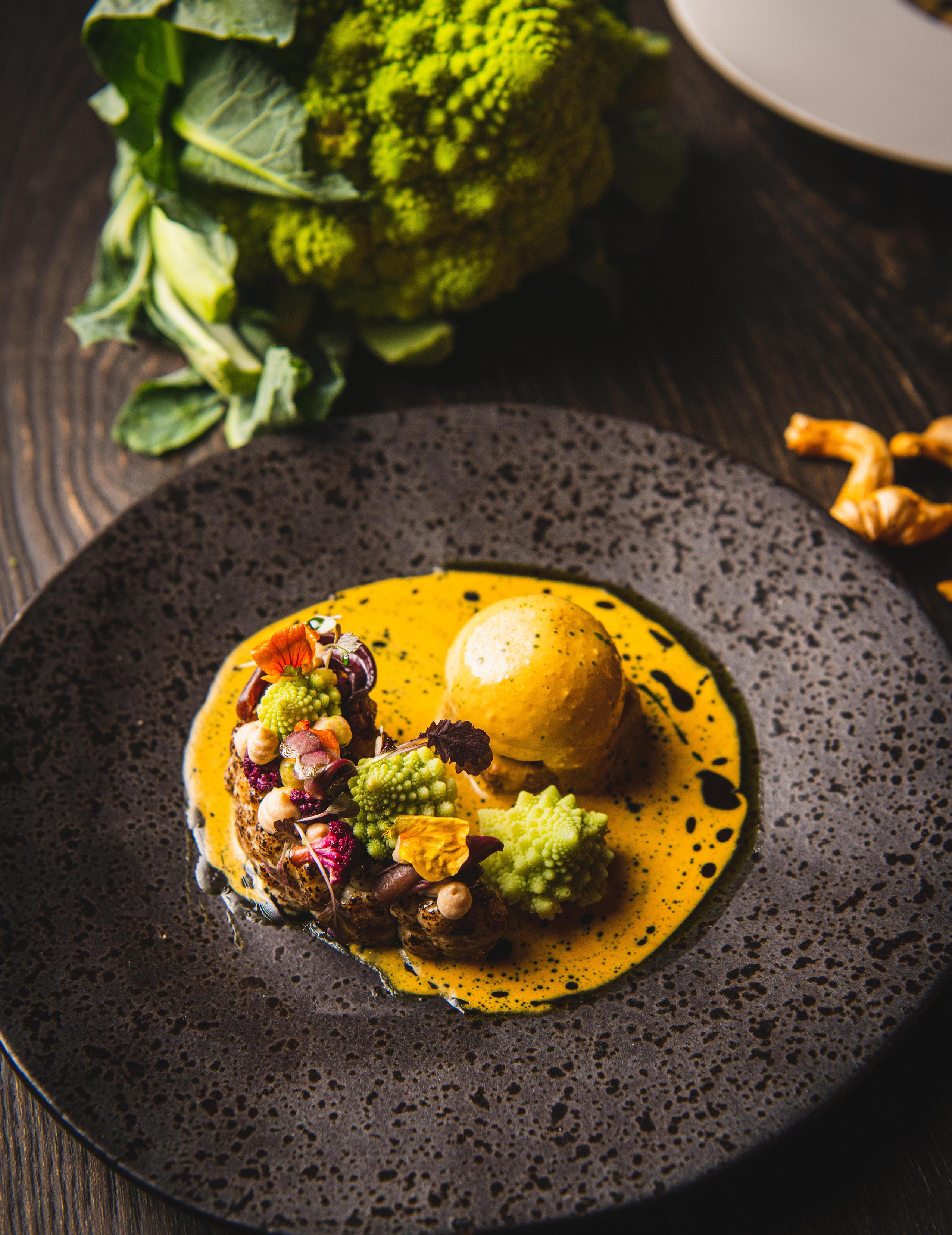
Six months later, the pandemic hit. Borough Market footfall dramatically dropped, and with his restaurant clients forced into closure, Charlie feared Turnips would close for good. Quite quickly though as the lockdown kicked in, the opportunity arose to put bags of produce together for NHS workers. Charlie jumped at the chance as it would keep the Turnips’ team together, but it also brought in many of his chef and restaurant clients willing to help. One of his chef friends, Tomas Lidakevicius of City Social, was one such volunteer and as they chatted, they realised that should the opportunity ever arise, they wanted to work together.
As the city moved through the pandemic with the vaccine programme and health protocols in place, Borough Market decided to allow al fresco dining towards the end of 2020. Charlie contacted Tomas and touted the idea of a restaurant celebrating the best of Turnips’ produce. Tomas agreed and in a mere two weeks, they created the first incarnation of their restaurant – albeit in a shipping container that had to be moved in and out of position on a daily basis. Since then, the restaurant’s reputation has grown and evolved into something truly unique: a genuinely sustainable, ultra-seasonal celebration of the very best produce, in the heart of the market it comes from; cooked and served with the respect and care it deserves.


Under the arches of Borough Market, ‘Turnips with Tomas Lidakevicius’ is the first half of a collaboration and ultimate celebration of quality produce and culinary fine dining - a restaurant that takes the concept of seasonality to its logical, most sustainable extreme. Chef Tomas Lidakevicus is a chef with a wideranging experience, from the Michelin stars of London to making ferments back home in his grandmother’s Lithuanian kitchen. He brings both extremes to his regularly changing dishes.

The other half of the equation is Turnips itself, the celebrated Borough market fruit and vegetable stand and wholesalers run by Charlie Foster. A chance conversation during lockdown resulted in a meeting of minds and philosophies, and Turnips with Tomas Lidakevicius was born: a restaurant endlessly inspired by the stall and the market in which it’s located.
Both men explain the menu is typically 80% vegetables and 20% protein, and every dish starts with a walk around the stand and a discussion on which ingredients they want to celebrate at that precise, perfect moment. It’s an approach that puts the stand’s hyper-seasonal – and very carefully ‘sourced for-flavour’ – produce front and centre in dishes such as Cevennes Onion, Waffles, Parmesan Cheese Sauce or Provence Round Courgette, Reine Claude Plum and Duck. In addition, with access to Turnips’ surplus pallet comprising unsold produce approaching its peak or looking less than perfect – Tomas can also apply this best-of-the-best approach in everything from ferments to stocks and bases. The kitchen at Turnips gives new, delicious life to produce that might otherwise be discarded. A deeply sustainable approach that brings Turnips with Tomas Lidakevicius ever closer to zero waste status.
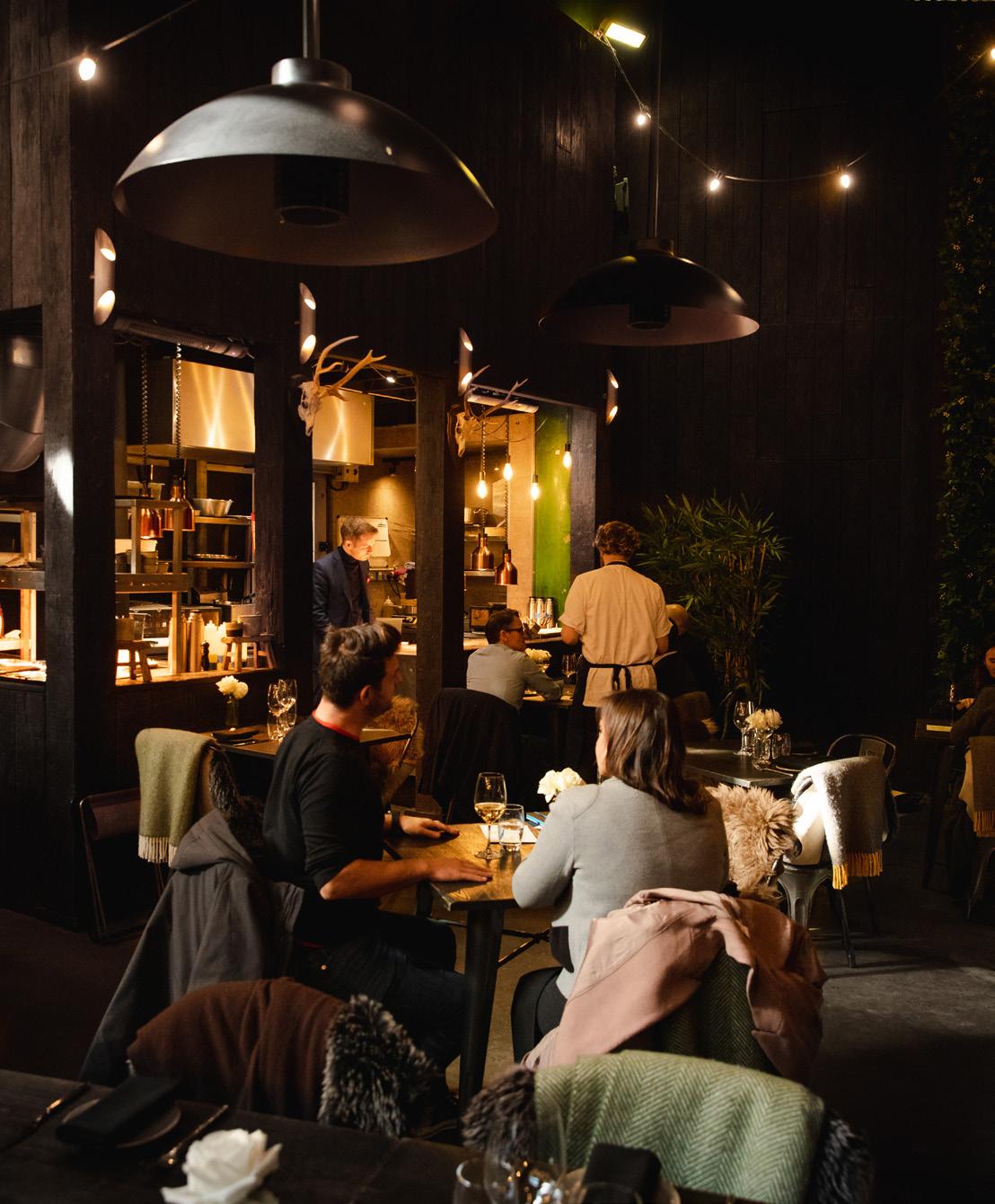
“At Turnips, every single day is a discovery. We have such a vast range of vegetables and fruit that sometimes choosing can be hard, and most chefs would be jealous: from exotic produce to basic ones, and I feel very lucky to have all these varieties at hand. It’s amazing to roll the menu - constantly changing - as the seasons move on and keep up with it, slower in winter and faster with the arrival of spring”
 CUCUMBER, KING FISH, MACKEREL GARUM ©SUSAN PUN
CUCUMBER, KING FISH, MACKEREL GARUM ©SUSAN PUN
July 2021 heralded a new chapter for Hélène Darroze when she announced her partnership with the grand luxury hotel, Villa La Coste, in Provence, France. Nestled at the heart of the Château La Coste Estate near Aix-en-Provence, the Villa La Coste is a modernday luxury palace celebrating authentic and exclusive refinement, in total harmony with the artistic life of the surrounding estate.
Here, Hélène orchestrates the entire food and beverage operations, offering a cuisine in her image, imbued with emotion, sincerity and authenticity. Seduced by the opulence and diversity of the vegetables and fruit from the region, she chose to award them the leading role on the menu, allowing the products from the region to take centre stage. From appetisers to end-of-meal delicacies, they lead the dance from beginning to the end.
In the fine dining restaurant, the “Walk in the gardens of Provence” menu - developed by Hélène alongside Marco Zampese, her Head Chef from Hélène Darroze at the Connaught in London, Thomas Pézeril, Executive Chef at Villa La Coste and her great pastry chef Kirk Whittle - takes place in eight acts. It will evolve and modify naturally according to the harvests and seasons


HUMMUS ©GULBEN GURLER

FOIE GRAS ©GULBEN GURLER
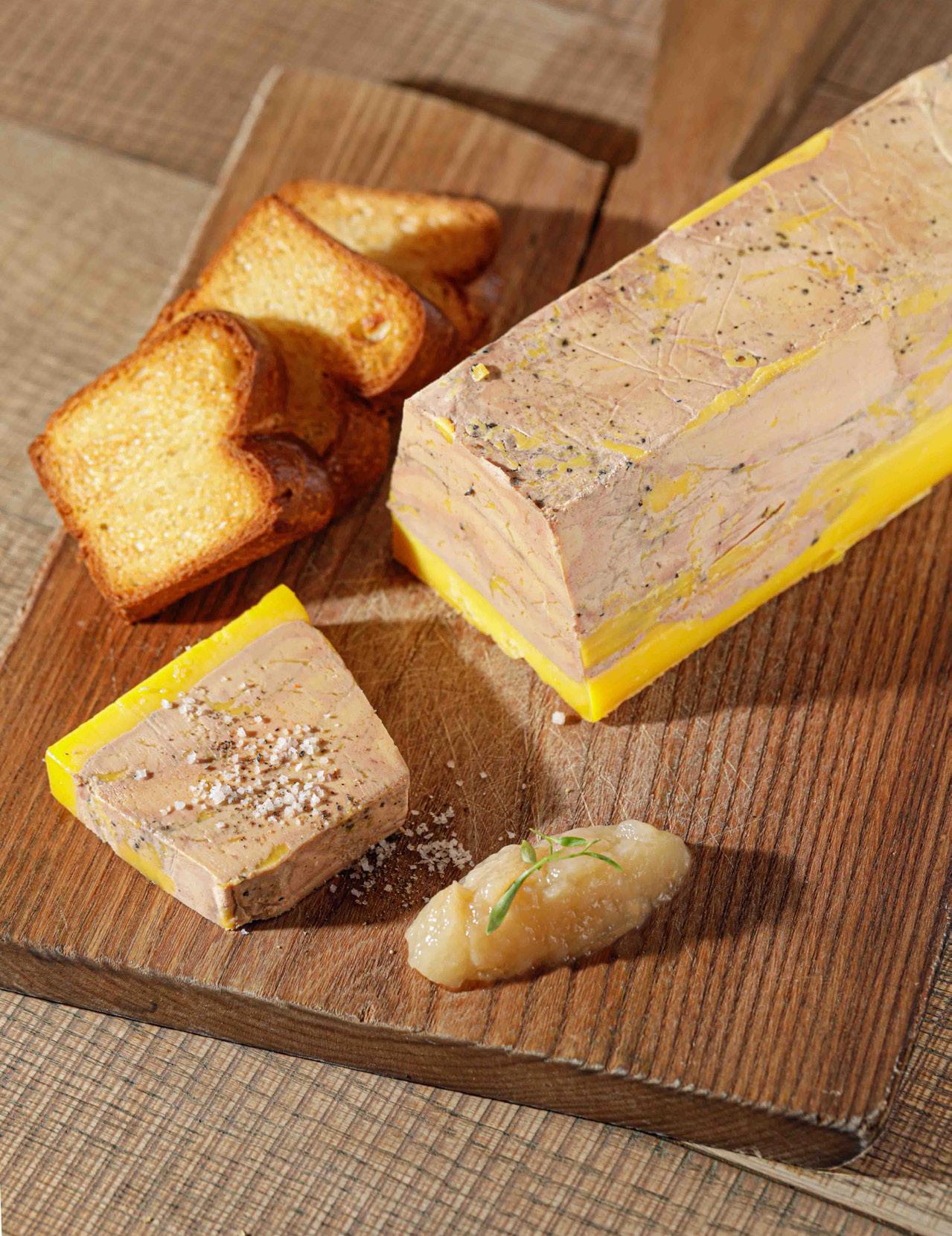
SCALLOPS ©GULBEN GURLER

CHOCOLATE PEAR ©GULBEN GURLER

AMATXI BURGER

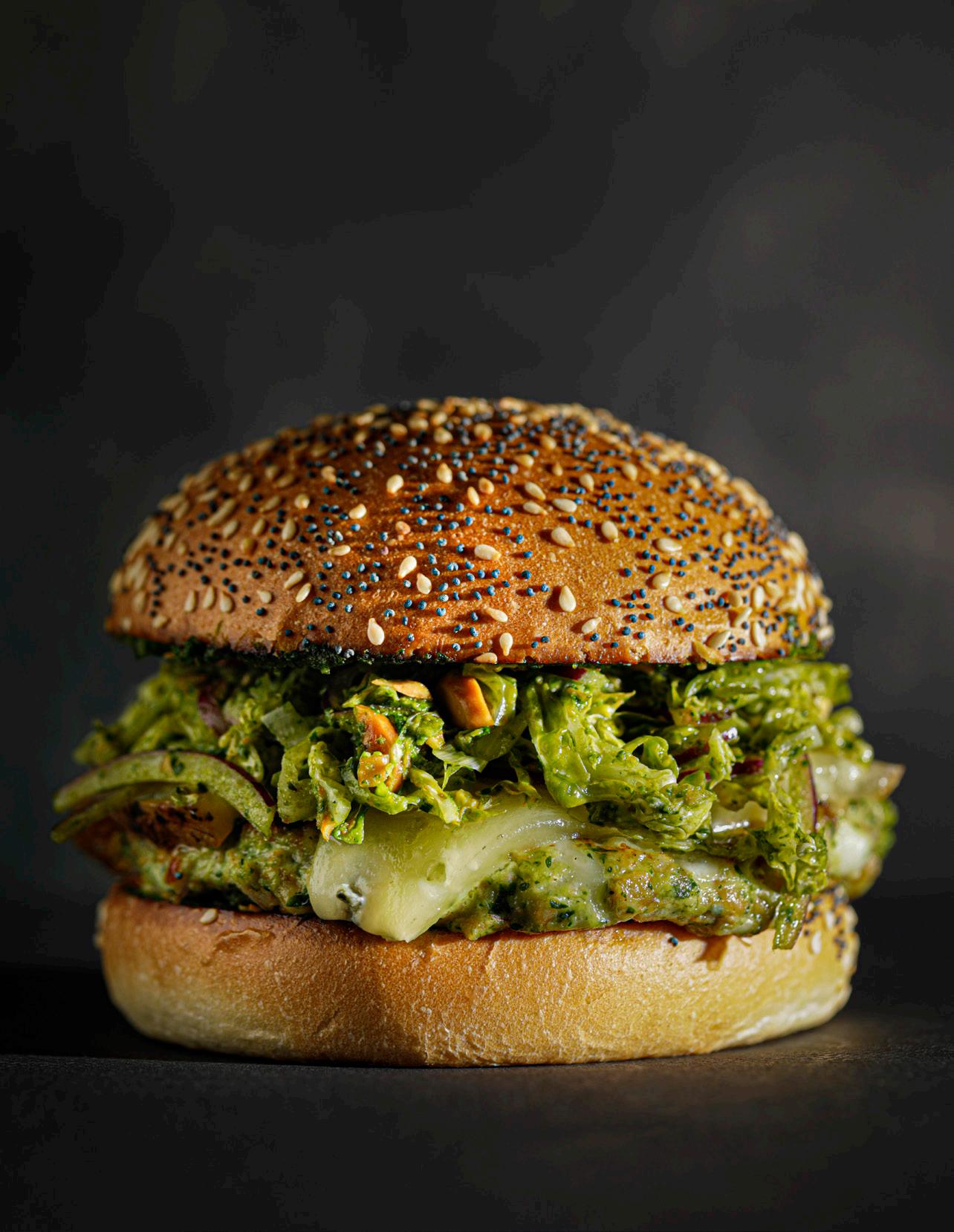

©GULBEN GURLER
PANTXOA BURGER
©GULBEN GURLER
COOKIES

©GULBEN GURLER
TXANGURO
©GULBEN GURLER
Located only a few hundred metres from her already popular bistro, Jòia, Jòia Bun is the result of a successful venture she explored during the Covid lockdown of 2020-21.
Hélène explains, “During the pandemic closures, my team and I launched a takeaway and delivery popup of premium burgers called Jòia Burger. A casual, adapted and extended offering, in line with our values and vision of gastronomy. It was a huge success, and we soon built a loyal following. When the restaurants finally reopened, we had to regretfully close it. When this new site became available at 16 Rue de la Michodière, I knew I had found the ideal location to meet the demand. I’m so pleased to bring the burgers back with the new Jòia Bun”.
Modelled on an American Diner, Jòia Bun is lively and authentic with an open kitchen and bar, mixed with a French atmosphere of elegance and warmth. Street food styled, Jòia Bun, also offers Hélène’s vision of a burger cuisine following the same principles of her gastronomy: produce of excellent quality; respect for the season; authenticity of taste; generosity in the offering; and a combination of her signature flavoursbrought from the Basque-Landes, her home region. “To make a good burger, you have to be strict about the quality of the ingredients you use”, adds Hélène.



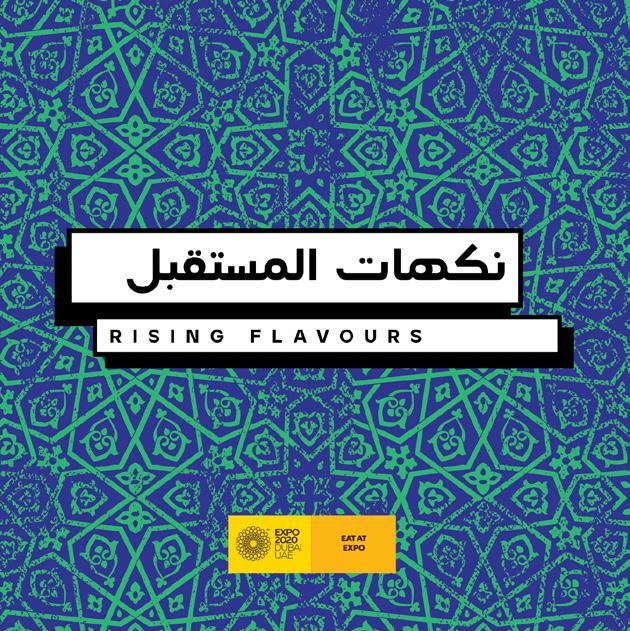

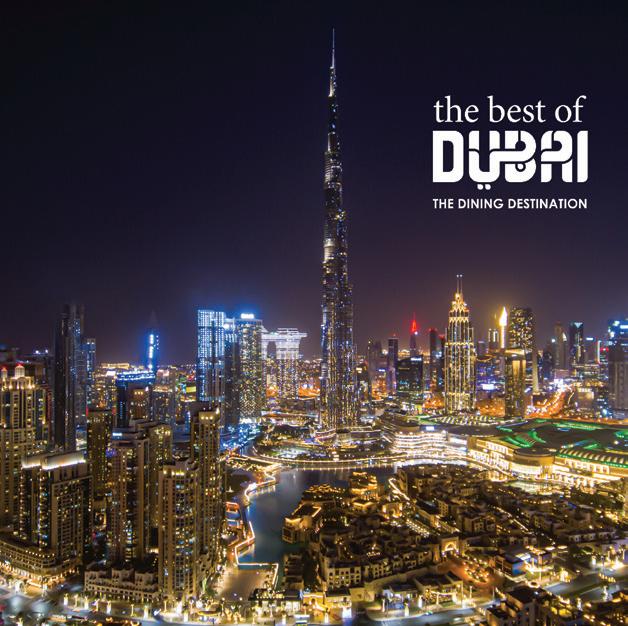


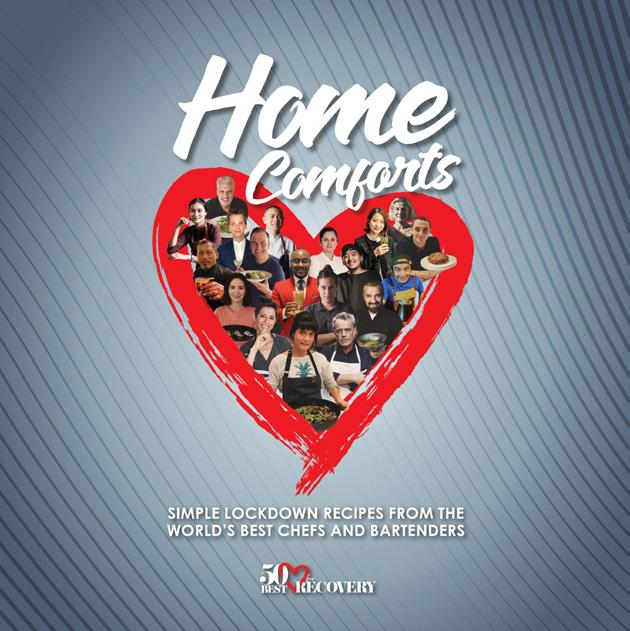

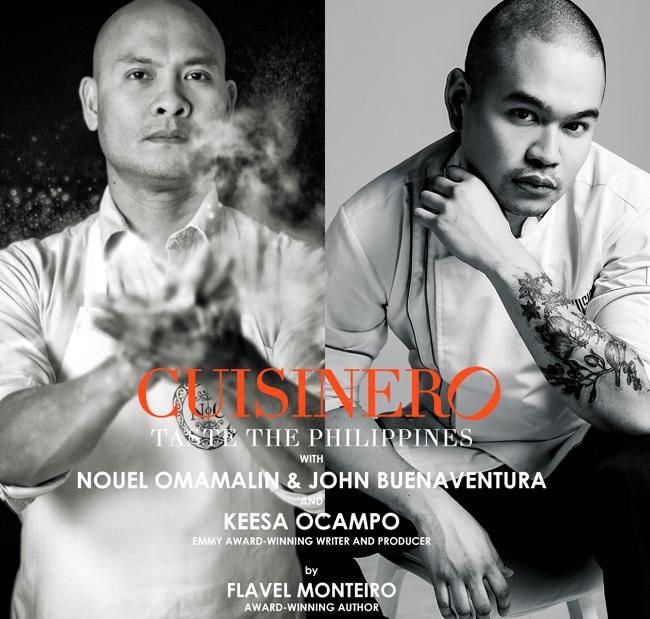
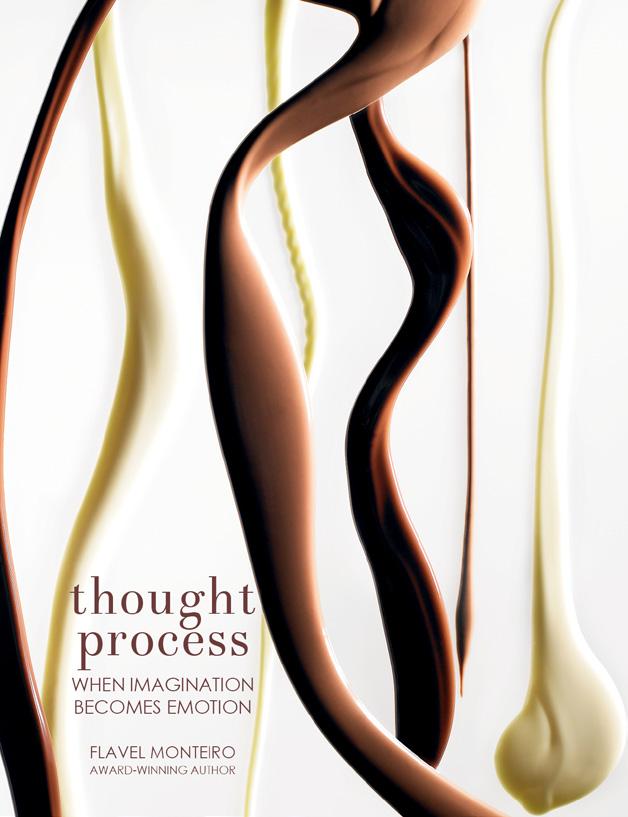





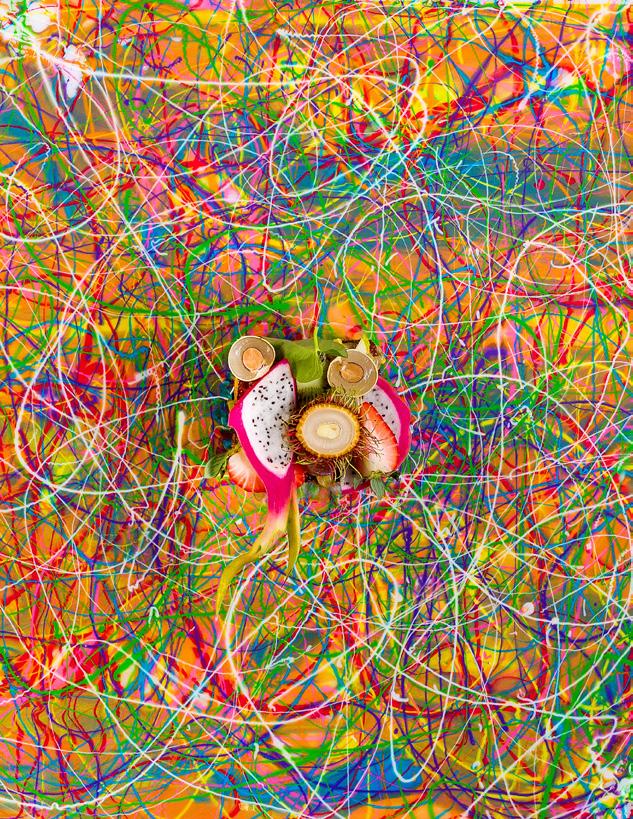

Marking the World Food Day, which is celebrated globally on October 16th each year, Dubai Cares, part of Mohammed Bin Rashid Al Maktoum Global Initiatives (MBRGI), and award-winning author Flavel Monteiro, have jointly launched the “Dine. Feed. Educate” initiative to raise funds in support of the education of underprivileged children globally. The initiative ran until 31 December, 2022, it promised diners from across the UAE a platform to turn their love of gastronomy into an opportunity to empower underprivileged children through access to quality education by supporting Dubai Cares’ school feeding programs.
The unique initiative will feature 7 unique dishes in honor of the UAE’s 7 emirates that are prepared by renowned chefs from 7 restaurants across Dubai. Food lovers from across the country can support “Dine. Feed. Educate” by visiting the participant restaurants and ordering the special dish curated especially for this initiative. Proceeds from the initiative was directed towards Dubai Cares’ school feeding programs.
“The UAE community has a rich history of coming together to support global issues. In collaboration with Flavel Monteiro and seven participating restaurants, we are proud to launch the “Dine. Feed. Educate” fundraising initiative on the World Food Day, which is a reminder of the hunger and food security challenges many countries continue to face today and prevent children from receiving an education. By joining the initiative, diners will be contributing to the success of Dubai Cares’ school feeding programs, which are one of the most effective ways to ensure that children can attend school and benefit from a life of equal opportunities,” said Abdulla Ahmed Alshehhi, Chief Operating Officer of Dubai Cares.
“The food industry in the UAE is increasingly becoming a force for good by supporting social causes that have a far-reaching impact. Our “Dine. Feed. Educate” fundraising initiative provides both restaurants as well as diners from across the country the opportunity to make a difference in the lives of children for whom school meals are the only way to attend and stay in school. The initiative invites foodies to enjoy exceptional international dishes from the prestigious kitchens of acclaimed chefs, while also supporting Dubai Cares’ school feeding programs. So, together, let’s dine, feed and educate,” said Flavel Monteiro.




